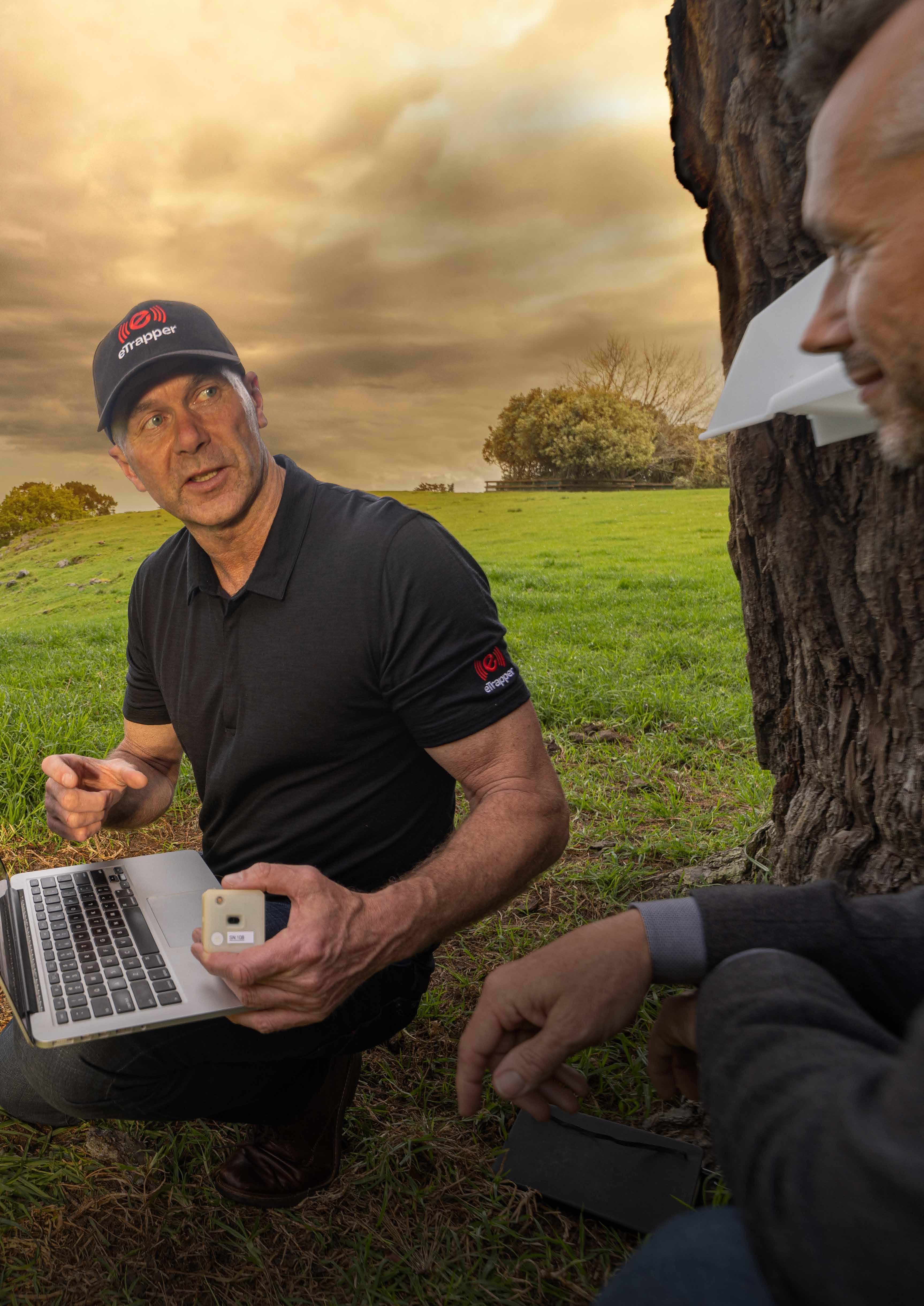
ANNUAL REPORT 2022 C.30
The voice of the kea is heard inland and the voice of the albatross is heard at sea, a kōtuku in the sky, a kākāpō on the ground. Everything has its rightful place.
An Annual Report presented to the House of Representatives pursuant to section 44 of the Public Finance Act 1989. This report covers the period from 1 July 2021 to 30 June 2022. It also includes any material developments since 30 June 2022.
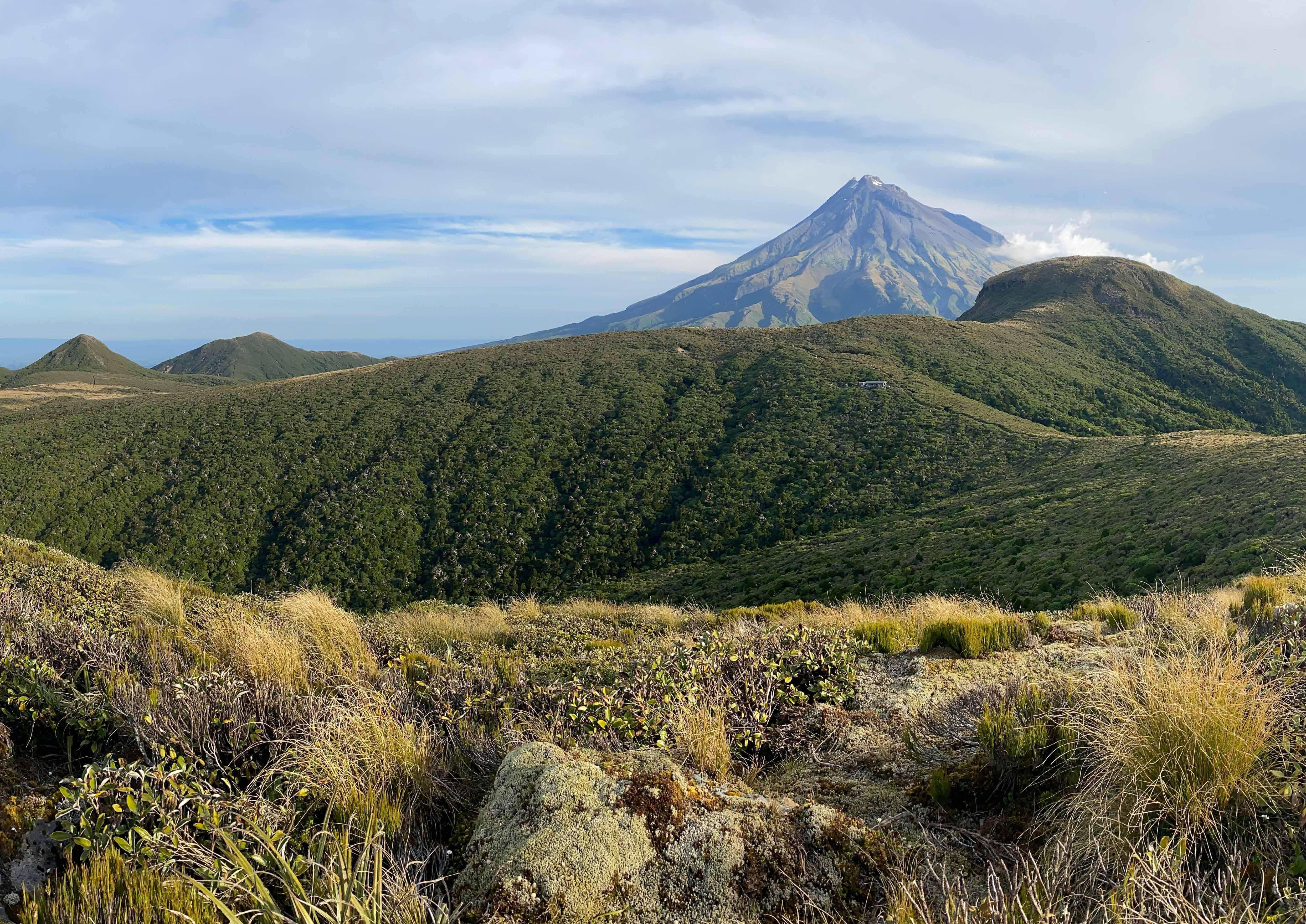 Towards Predator-Free Taranaki in conjunction with Taranaki Mounga, covers a range of terrain including the majestic Mt Taranaki itself. Photo by Melissa Brignall-Theyer.
Towards Predator-Free Taranaki in conjunction with Taranaki Mounga, covers a range of terrain including the majestic Mt Taranaki itself. Photo by Melissa Brignall-Theyer.
Ko te rere a kea ki uta, ko te whakataki mai a toroa ki tai, a, he kōtuku ki te raki, he kākāpō ki te whenua Contents Foreword from the chair 4 About Predator Free 2050 Limited 6 Highlights 12 Our outcomes 14 Statement of performance 47 Looking ahead 54 Financial statements 59 3PREDATOR FREE 2050 LIMITED ANNUAL REPORT 2022
Foreword from the chair
When the Government announced the Predator Free 2050 goal in 2016, it seemed like an enormous goal – both in terms of effort and in cost. Six years later, we are already seeing that goal become more attainable, in part through the work that Predator Free 2050 Limited has undertaken.
In the year to 30 June 2022, Predator Free 2050 Limited supported 20 landscapescale projects,1 as well as facilitated access to operational best practice and new tools coming onto the market.
These landscape projects are currently working across 451,000 hectares and are forecast to be managing over 823,000 hectares towards eradication by 30 June 2024. This is a significant portion of the 1-million-hectare target for suppression set for the wider system to be achieved by 2025.
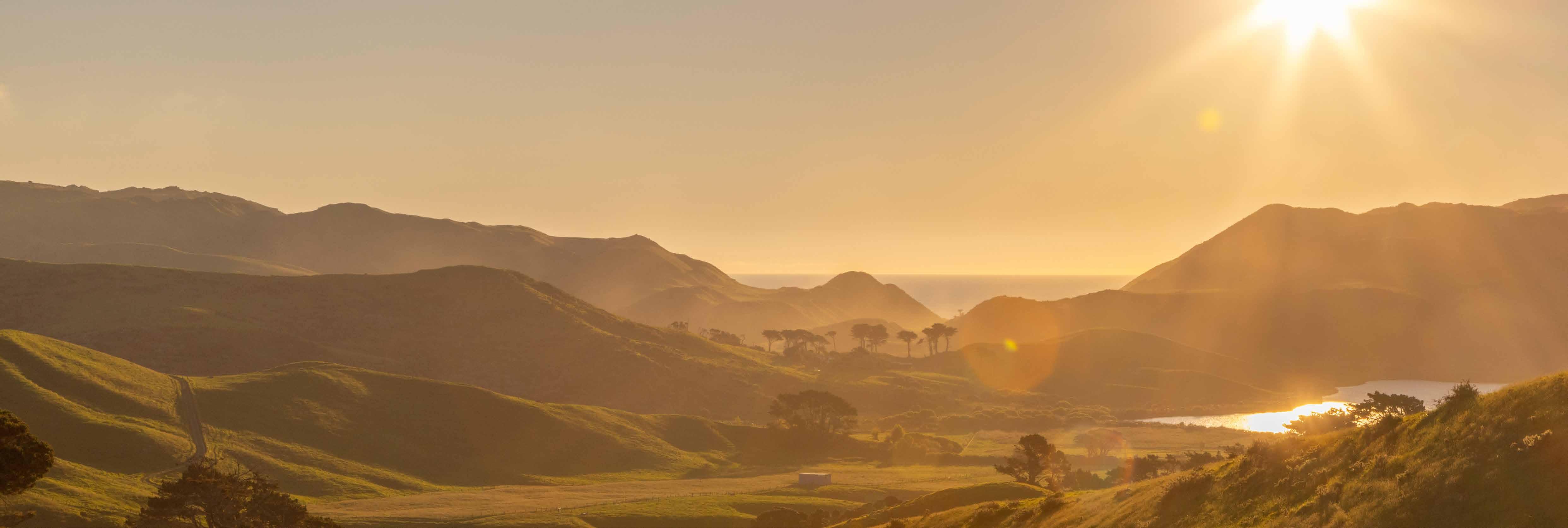
Among our funded projects is Predator Free South Westland, which is approaching a point where we will have proof of concept of our ability to attain and maintain a predator-free status across both forest and rural environments in this location.
Our research and development investments are also paying off. Our research strategy projects have made critical advances that will enable breakthroughs in new approaches and tools in the medium to long term, such as world-first full genomes for ship rats and stoats, which increase understanding of how best to target these predators.
And our Products to Projects investments are already delivering new tools based on current science, such as long-life lures and thermal cameras with artificial intelligence (AI) image recognition, into the hands of our landscape projects. Feedback from predator eradication groups around the country is that these tools are making a big contribution to their efforts.
The estimated cost of achieving the Predator Free 2050 goal has dropped significantly since the original estimate of $32 billion by Manaaki Whenua,2 due to new technology and techniques developed through our work, among other factors. The new estimate is now near $8 billion.3
At the same time, research commissioned by the Predator Free New Zealand Trust shows that 35 percent of New Zealanders are aware of the Predator Free 2050 goal, and almost half can identify the goal when prompted.4
We intend to work closely with partners like the Department of Conservation and the Trust to increase that awareness and maintain public support for this important work.
1. Funding for the Rangitoto Birdsong (D’Urville Island) project was withdrawn during the year, which leaves 19 projects operating as at 30 June 2022.
2. Parkes, J.P., Nugent, G., Forsyth, D.M., Byrom, A.E., Pech, R.P., Warburton, B. & Choquenot, D. (2017). Past, present and two potential futures for managing New Zealand’s mammalian pests. New Zealand Journal of Ecology 41(1), 151–161. https:// newzealandecology.org/nzje/3283
3. Internal calculation supported by on-the-ground results from some of our most innovative projects.
4. Fresh Perspective>Insight. (May 2022). Understanding the Health of Predator Free 2050. https://predatorfreenz.org/wpcontent/uploads/2022/07/PFNZ_Final.pdf
Predator Free 2050 Limited is highly respected by the organisations that deliver the predator free mahi. These organisations see us as a strong enabler in their work. Our relationships with mana whenua continue to deepen and will be a major driver for our ongoing success.
The Company recognises the urgency of the goal and has developed a track record of being agile, entrepreneurial and innovative. These attributes have enabled us to attract other investors, amplifying the Government’s investment.
We will continue to work in this way to empower landscape-scale projects across the country, and to seek out research and technology that will provide the breakthroughs needed for this goal to be achieved.
We are continually learning and improving our methods to complement and extend the important work of the Department of Conservation and the wider predator free community. This includes embracing new ways of working that support our Treaty partner, the unique knowledge that iwi and hapū possess of their whenua, and their desire to see it flourish.
I was very pleased to welcome our new CEO, Rob Forlong, at the start of July 2022. Rob brings his strong leadership credentials and a broad experience of working on interconnected environmental issues to contribute to the predator free movement.

I would like to acknowledge Abbie Reynolds, who finished as CEO in August 2021 after contributing her energy and enthusiasm during a period of strong growth, and Brett Butland for his capable performance as acting CEO from August 2021 to July 2022. I would also like to thank Traci Houpapa and Gary Lane, who served as directors during the year and have left to take on other responsibilities.
We are currently waiting for decisions on our strategic direction and organisational structure following a review of achievements during our first five years. In the meantime, we have moved to implement all the recommendations of the review reports which are for the Company. In particular, work is advancing to improve our project and financial reporting to meet the increased accountability requirements associated with a large funding boost from the Provincial Growth Fund and Jobs for Nature.
This additional funding has significantly boosted progression towards achieving our medium- to long-term goals, with our landscape investments of $79 million leading to projects forecasting to generate co-funding of approximately $145 million.
While we are a small company working within a large conservation system, we have already made a substantial contribution to establishing and gaining momentum towards the Predator Free 2050 goal.
David MacLeod Chair
5
About Predator Free 2050 Limited
Many of New Zealand’s taonga species – native birds, bats, reptiles and invertebrates –cannot coexist with introduced predators, and are confined to off-shore or fenced sanctuaries and/or are threatened with extinction.
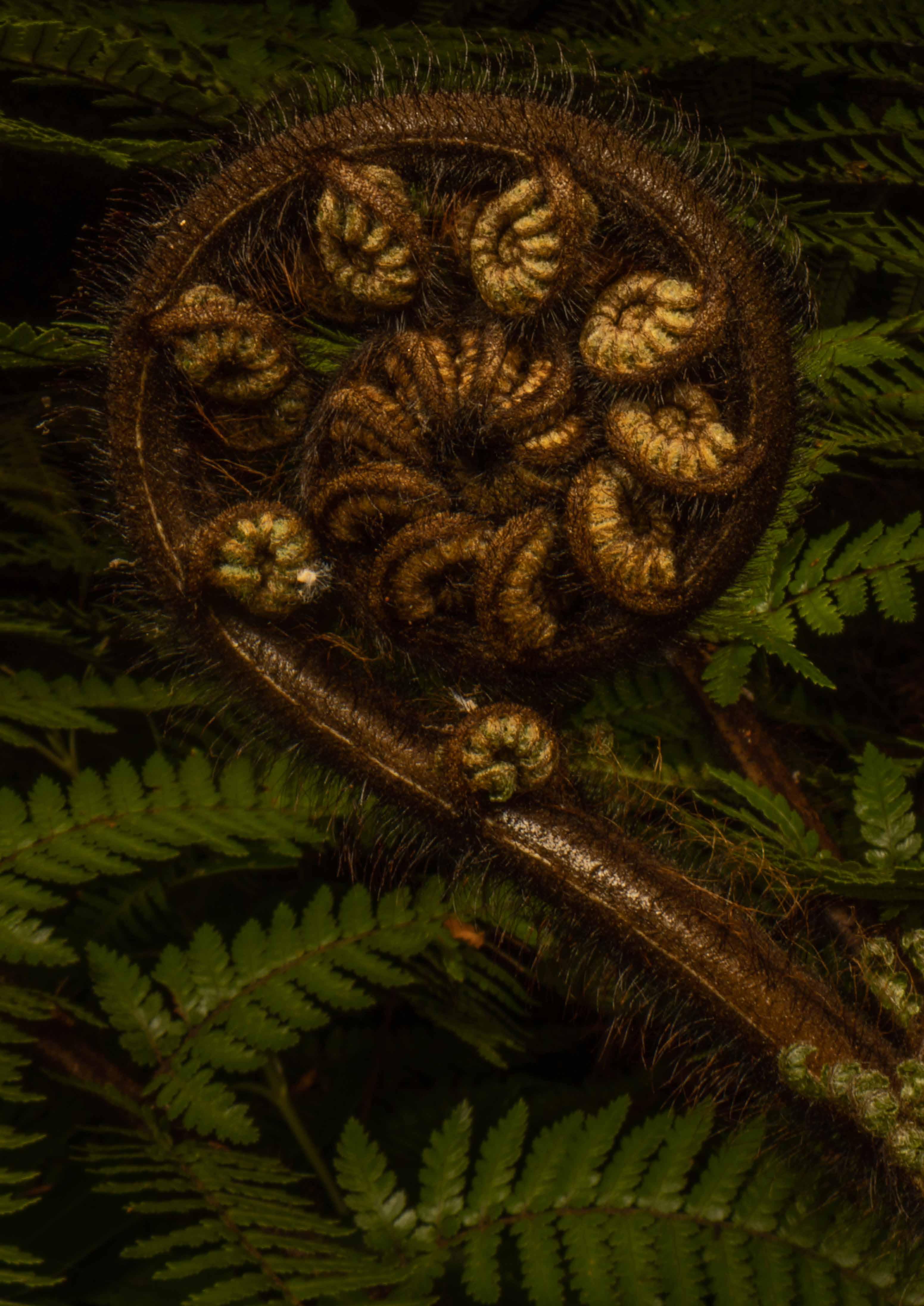
Our mission
Predator Free 2050 Limited was created to make a significant contribution to the New Zealand Government’s goal of eradicating possums, stoats and rats by 2050.
How we work
Permanently removing predators is an opportunity to halt decades of biodiversity decline across New Zealand.
Who we are
Predator Free 2050 Limited (the Company) is a Crown-owned company established under Schedule 4A of the Public Finance Act 1989 and is registered under the Charities Act 2005. We are monitored by the Department of Conservation through performance reporting against the outcomes set out in the Company’s Statement of Intent (SOI) and Statement of Performance Expectations (SPE).
We work collaboratively with numerous organisations and groups to achieve pest eradication at scale across mainland Aotearoa New Zealand.
We do this by
• facilitating co-funding arrangements that enable large-scale predator control and eradication projects
• investing in companies developing new tools and knowledge to support those projects
• driving the breakthrough science to fill the gaps in our predator eradication capability.
We also provide technical support and advice to the landscape projects that we co-fund and to potential new project partners.
OUTCOME
How Aotearoa New Zealand will achieve the Predator Free 2050 goal
Many different agencies and factors play a role in contributing to the Predator Free 2050 goal. This diagram shows the enablers and delivery elements that will be needed to achieve predator eradication, as well as the short- and long-term benefits for Aotearoa New Zealand.
Predator Free 2050 Limited contributes to all of these elements through our programme of work, and we collaborate with all other parts of the system.
Predator Free 2050 pathway
ENABLERS
ELEMENTS



Tools
and technology Breakthrough science
Strategic
roll-out at scale
ERADICATION
Biodiversity
Tourism National pride Ecosystem services
Landscape projects Employment and skills Dramatic reduction in conservation costs Carbon
sequestration
Export
potential of tools and knowledge
R&D embedded in landscape projects Funding
Relationships and permission (including social licence)
Commercialisation
New Zealand s Biod versity Strategy
Capab l ty Bui ding
DELIVERY
SHORT-TERM BENEFITS
LONG-TERM BENEFITS
Photo by Shaun Lee.
7PREDATOR FREE 2050 LIMITED ANNUAL REPORT 2022
Our directors
David MacLeod is chair of the board of Predator Free 2050 Limited. He is also a director for Port Taranaki and a successful businessman, with iwi connections to Ngāti Mutunga, Ngāti Ruanui, Ngāi Tahu and Ngāti Porou. He was chair of Taranaki Regional Council 2007–2022.
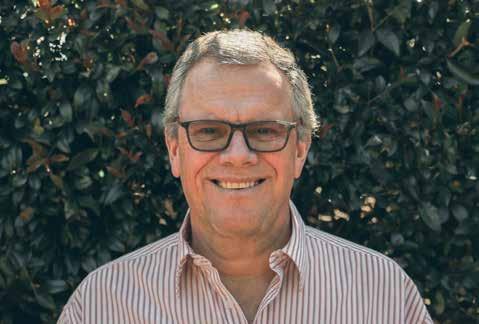

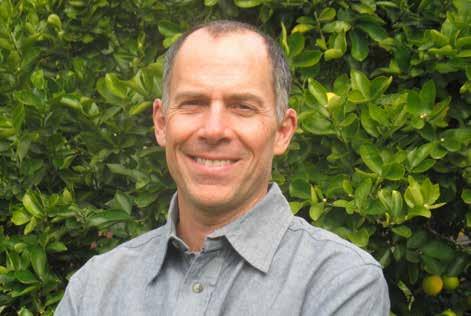
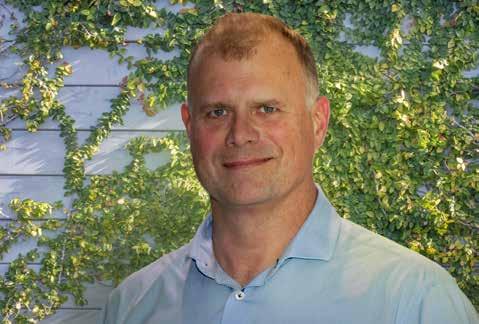
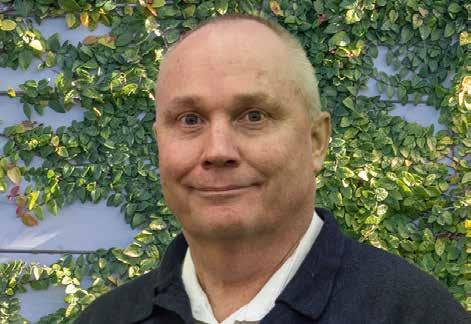
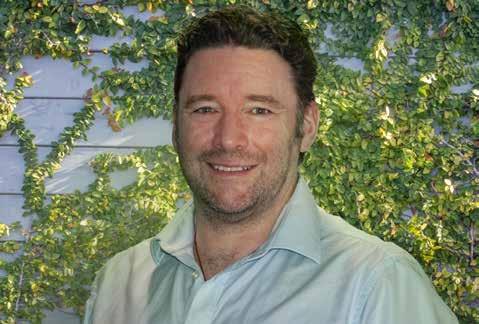
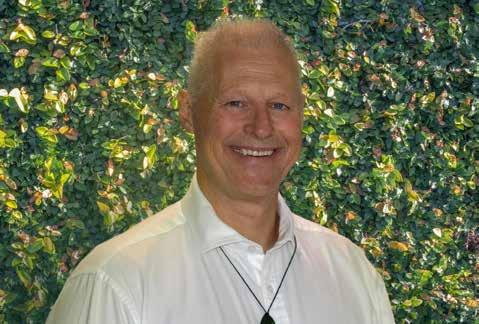
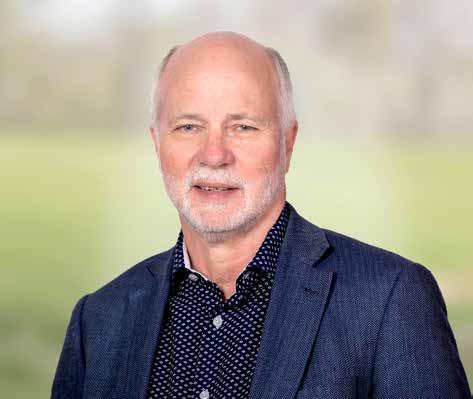

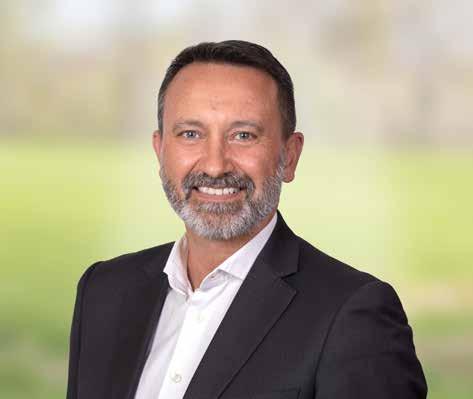
Estelle Leask is of Ngāi Tahu, Whakatōhea and Ngāti Ruanui descent. She is a senior environmental advisor for Te Rūnanga o Ngāi Tahu, sits on the Southland Conservation Board, is a member of the Whenua Hou Committee and chairs the Bluff Hill Motupōhue Environment Trust. She was named a Member of the New Zealand Order of Merit for services to conservation and Māori in June 2022.
Devon McLean is the environmental advisor to the NEXT Foundation. He has extensive business experience, including as COO for Carter Holt Harvey Limited. Currently he holds governance roles at Zero Invasive Predators Limited, Project Janszoon, the Taranaki Mounga Project, Predator Free Wellington, Te Manahuna Aoraki Project and Predator Free South Westland. He was awarded a Queen’s Service Medal in 2015 for services to the environment.
Katie Milne is vice president of the World Farmers’ Organisation and a former president of Federated Farmers.

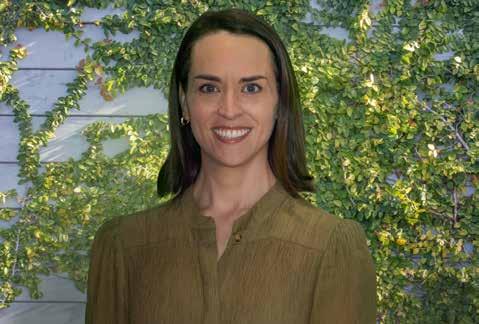
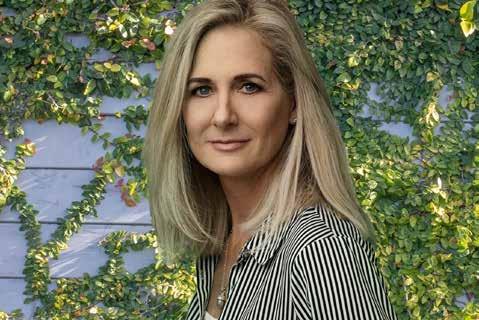
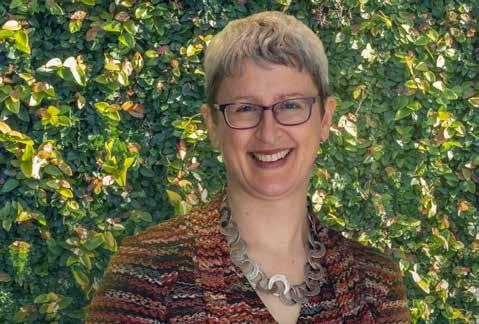
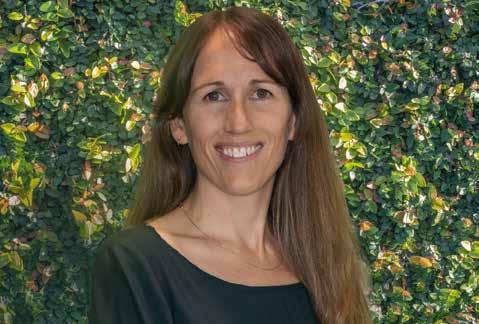
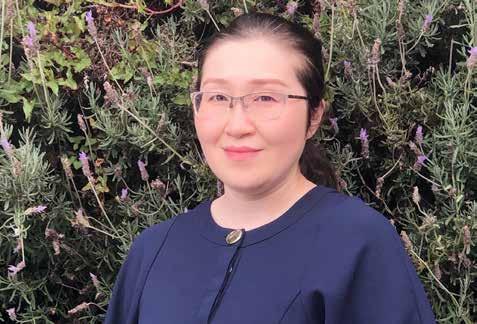
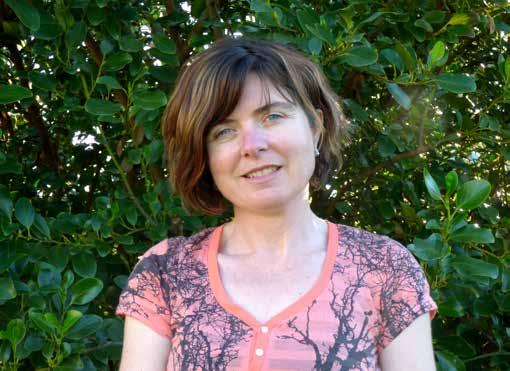
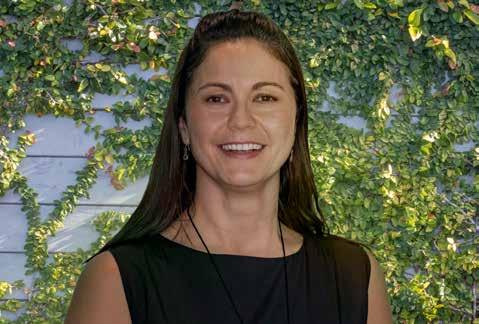
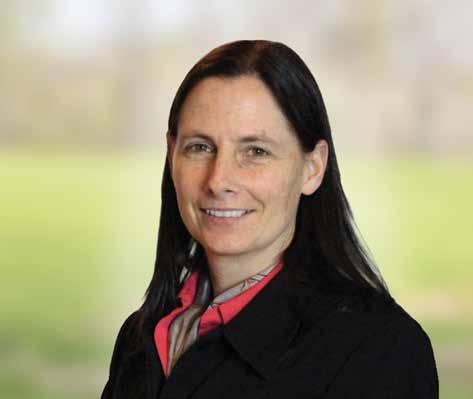
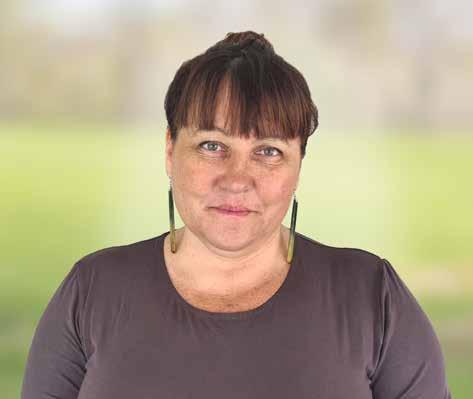
She is a dairy farmer at Rotomanu, east of Lake Brunner on the West Coast. She is the chair of Predator Free South Westland, a member of the West Coast Tai Poutini Conservation board and of the Todd Foundation board. She has served on a range of other farming-related boards and national and regional advisory committees. She received the Dairy Woman of the Year Award in 2015.
Our staff
Financial Year 2022
At 1 July 2021, Abbie Reynolds was CEO. Brett Butland was acting CEO from 6 August 2021. Louis Nel was head of finance and operations until 3 June 2022. Aseel Hameed was appointed as acting head of finance and operations on 3 June 2022.
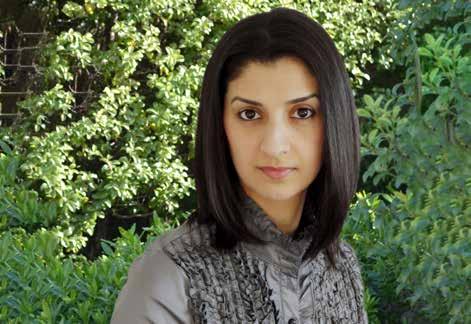
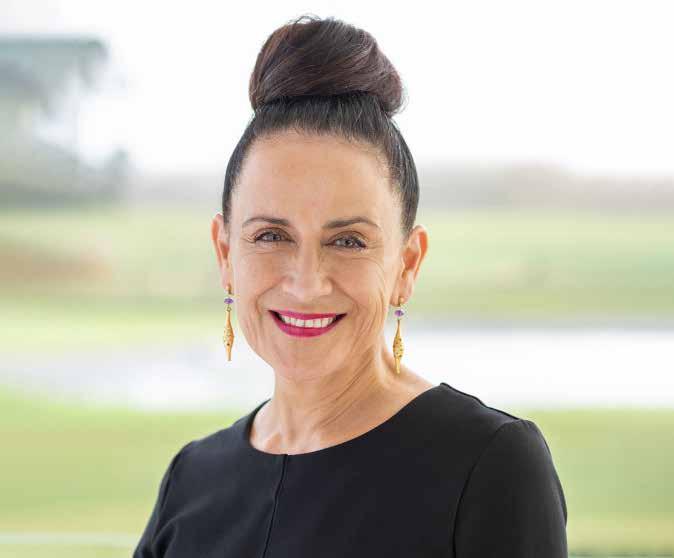
We had a team of 13 staff (11 FTEs) as at 30 June 2022.
Since July 2022 (FY23)
Rob Forlong started as the CEO on 11 July 2022. Bruce Collis was appointed as the new chief financial officer, and Christian Bonnevie as the new strategic communications advisor.
As at 31 October we have a team of 16 staff (12.75 FTEs), working in Whangārei, Auckland, Hamilton, Hawke’s Bay, Wellington and Dunedin.
 David MacLeod, Chair
Gary Lane resigned February 2022
Traci Houpapa resigned July 2022
Estelle Leask, MNZM
Devon McLean, QSM
Katie Milne
Rob Forlong Chief executive officer
Aseel Hameed Acting head of finance and operations
Nathan McNally Project support manager (Landscape projects – South Island)
Nicole Hayward Finance administrator
Bruce Collis Chief financial officer
Project support manager (Landscape projects – North Island)
Anna Di Business analyst
Alyssa Bird Executive assistant
Professor Dan Tompkins Science director
Catherine Jeffcoat Communications manager
Kevin Collins Knowledge broker
Christian Bonnevie Strategic communications advisor
Brett Butland Landscape director
Svea Cunliffe-Steel Governance director
Olivia Rothwell R&D project support manager
Shelley Augustine (neé Crawford) Communications advisor
David MacLeod, Chair
Gary Lane resigned February 2022
Traci Houpapa resigned July 2022
Estelle Leask, MNZM
Devon McLean, QSM
Katie Milne
Rob Forlong Chief executive officer
Aseel Hameed Acting head of finance and operations
Nathan McNally Project support manager (Landscape projects – South Island)
Nicole Hayward Finance administrator
Bruce Collis Chief financial officer
Project support manager (Landscape projects – North Island)
Anna Di Business analyst
Alyssa Bird Executive assistant
Professor Dan Tompkins Science director
Catherine Jeffcoat Communications manager
Kevin Collins Knowledge broker
Christian Bonnevie Strategic communications advisor
Brett Butland Landscape director
Svea Cunliffe-Steel Governance director
Olivia Rothwell R&D project support manager
Shelley Augustine (neé Crawford) Communications advisor
9
Te Tiriti o Waitangi
We recognise the special kaitiaki role that Māori play in managing our natural resources, as well as our responsibilities under te Tiriti o Waitangi. We believe the strength of our relationships is crucial to the kaupapa succeeding in the protection and restoration of our taonga species in Aotearoa New Zealand.
At Predator Free 2050 Limited, we have begun our journey to embed Te Tiriti o Waitangi and its principles into our organisational values so that they become our fundamental way of operating.

We are building our understanding of Te Tiriti and exploring how the principles of partnership, participation and protection can be applied in each of our workstreams. In the coming year we will recruit a te ao Māori advisor to support us in our journey.
We promote partnership by requiring all of our funded landscape projects to partner with iwi or hapū, and we support iwi and hapū to develop their own predator free projects.
Through the Korehāhā Whakahau project, Predator Free 2050 Limited is supporting the aspirations of Ngāti Awa to restore te taiao and equip kaimahi with transferable skills to support their whānau.
We have supported Ngāti Awa to plan and host a wānanga for our landscape projects which is focused on supporting the projects to engage and work with mana whenua and to better
understand the role of mātauranga Māori in predator eradication work.
This was originally scheduled to take place in March, but due to Covid-19, was moved to early September 2022.
We have collaborated to develop two more iwi-led projects, one in Te Urewera, led by Ngāi Tūhoe, and one in Kaipara, led by Te Uri o Hau.5
The Aotea project is now iwi-led also, by the Ngāti Rehua Ngātiwai ki Aotea Trust, and we are updating our funding agreement accordingly.
We have also funded a research project for Ngāti Awa to look at how local knowledge, coupled with the latest innovations in technology, can be applied to pest eradication.
Further research funding that supports Te Tiriti principles:
Capability Development (Alana Alexander): Māori capability development and Māori-directed genomics research, with strong iwi and hapū engagement.
Science for Technological Innovation National Science Challenge (SfTI): will include a Māori researcher exploring how mātauranga Māori and te ao Māori can and should support and drive predator detection.
Genomics Aotearoa: includes Māori researchers assessing attitudes to the genetic work with particular emphasis on understanding relevant mātauranga Māori.
Dr Te Kei Merito, Ngāti Awa kaumatua, speaking on te whakapapa o te taiao at te Taurikura Anamata wānanga. Photo by Stuart Attwood.
5. The Waikaremoana project agreement with Ngāi Tūhoe was terminated in September 2022 with the agreement of both parties.
11PREDATOR FREE 2050 LIMITED ANNUAL REPORT 2022
New
by
Better understanding of
through
of
led by Genomics Aotearoa.
Effective technique developed for targeting last
in an
Development of a
as
with a
by ZIP.
across the
led by Manaaki Whenua.
Multi-national
research outputs delivered.
Limited sponsored products now available for use by projects, including long-life lures, highinteraction traps, thermal cameras with artificial intelligence (AI), and remote communications.
New PoaUku long-life ceramic lures experiencing good sales.
Predator Free South Westland deployed the new ZIP Backcountry Camera to reduce the need to check trap lines. NZ AutoTraps has now sold 10,000 AT220 self-resetting traps to date.
11 new tools and 4 best practice guidelines for use of tools, from 8 different providers, received PF2050 Limited funding.
Highlights to 30 June 2022 Landscape projects Science and research Products and innovation Public support of these landscape projects are iwi-led.20 4 7 451,000ha landscape projects supported in the year to 30 June 2022. Predator Free Whangārei –eradication work has begun around Whangārei Heads Peninsula. Predator Free Te Kinga – Developing a kea friendly trapping solution for the protection ring around and on Te Kinga, and monitoring. covered by current operations.7 Pest Free Onetahua –Feasibility study complete and detailed operational planning underway.
Predator
Free Hawke’s Bay – Nearing completion of phase 1 to eliminate possums from 14,600ha of the Māhia Peninsula. Pest Free Banks Peninsula – Operations have begun on Kaitorete, and preparations for beginning the possum eradication on Te Pataka o Rakaihautū — Banks Peninsula itself are well advanced. Te Korowai o Waiheke –Stoat eradication on track with remaining numbers very low. Rat eradication trials started. Korehāhā Whakahau –Moving through the project area, removing possums as they go. They are currently operating in over 1700ha of the project area. Predator Free South Westland – 43,600ha or 45% of the South Westland project area is actively managed for elimination of rats, stoats and possums. Predator Free Wellington – Eliminated stoats, weasels and Norway rats from the Miramar Peninsula, ship rats not far behind. PF2050
1080 to Zero approach now driving elimination at significant scale in South Westland,
Zero Invasive Predators (ZIP).
stoats
area
single poisoned rat
bait,
78% overall stakeholder satisfaction for Predator Free 2050 Limited.
world-leading landscape genetic connectivity model for stoats, telling us how they disperse
landscape,
collaboration begun to quantify carbon benefits from predator eradication. new research projects funded.
target species
world-first high-quality full genome sequencing
kiore (Pacific rat),
Taranaki Taku Tūranga –Towards PredatorFree Taranaki – Removed possums from two blocks of over 1,000ha and are in incursion and response phase. One in five households in New Plymouth are involved in the trapping programme. 1080 ZERO 18 5 Including two new projects funded by Jobs for Nature this year and expansion funding granted for Predator Free Dunedin.6 Rangitoto Birdsong funding withdrawn Nov 2021 (not terminated). Waikaremoana and Predator Free Southland (Awarua) project agreements terminated Sept 2022. For definition of current operations, see page 19. 6. 7. 13PREDATOR FREE 2050 LIMITED ANNUAL REPORT 2022
Our Outcomes
This section reports against the three key areas of our Statement of Performance Expectations (SPE): new landscapes, new partners and new science.
Progress towards the Predator Free 2050 goal
National 2025 target PF2050 Limited’s contribution to target as at 30 June 2022
By 2025, increase by 1 million hectares (compared with 2016) the area of New Zealand mainland where predators are suppressed, through Predator Free 2050 projects.
By 2025, demonstrate that predator eradication can be achieved in areas of mainland New Zealand of at least 20,000ha, and that these areas can be defended from reinvasion without the use of fences.
By 2025, whānau, hapū and iwi will have identified sites of importance for predator eradication, and at least five eradication projects led by whānau, hapū and iwi will be underway across the country.

By 2025, develop a breakthrough science solution that would be capable of eradicating at least one small mammal predator from the New Zealand mainland.
The landscape projects supported by the Company are making a significant contribution to this goal and are forecast to be working on over 823,000ha towards eradication by 30 June 2023. As at 30 June 2022, landscape projects were working on 451,000ha towards eradication.
Predator Free South Westland is managing 43,600ha for elimination of rats, stoats and possums.
Predator Free Hawke’s Bay is on track to eliminate possums by December 2022 across the Māhia Peninsula (14,600ha).
Four projects are currently iwi-led: Korehāhā Whakahau by Ngāti Awa, Waikaremoana by Ngāi Tūhoe, and Pest Free Kaipara by Te Uri o Hau.8 Ngāti Rehua Ngātiwai ki Aotea Trust is leading Tū Mai Taonga (Aotea Great Barrier) with the transfer of the funding agreement currently underway.
The Company’s first research strategy drove the underpinning outcomes (e.g. predator genomes) needed to enable the most likely research pathways that will achieve this goal (e.g. cost-effective specific toxins, chemical reproduction suppressants, biocontrol and genetic control). Our second research strategy is building on this foundation to provide the breakthroughs.
By 2025, eradicate possums or mustelids from at least one New Zealand city.
By 2025, effective tools and knowledge will be available to achieve predator eradication on farmland.
Wellington has eliminated stoats, weasels and Norway rats from the Miramar Peninsula, with ship rats not far behind.
Dunedin is on track to remove possums from Otago Peninsula by September 2023.
The Company has invested in the development of 7 new products that are already available, and a further 19 tools and 4 best practice guides are on track for completion by December 2024.
Tīeke / South Island saddleback.
Photo by Shaun Lee.
We are contributing to the national 2025 targets, and our work will play an important role in achieving these.
8. The Waikaremoana project agreement with Ngāi Tūhoe was terminated in September 2022 with the agreement of both parties.
15PREDATOR FREE 2050 LIMITED ANNUAL REPORT 2022
New landscapes
In the year ending 30 June 2022, we supported 20 landscape projects (including one that was paused during the year).9 As well as advancing predator eradication on a large scale, these landscape projects all have unique geographical or environmental features and generate valuable knowledge about what works and what does not. By achieving eradication outcomes, landscape projects are primarily focused on demonstrating that eradication is possible where people live, work and play, and in the absence of fences. This approach requires innovation, agility, curiosity and research. By supporting landscape projects to adopt and trial new
tools, technology and innovative techniques, the Company supports a “try and fail fast” approach.
The Company facilitates landscape projects to collaborate widely with each other as well as new and emerging projects, to share knowledge and lessons learned. This knowledge provides essential guidance for how we can achieve eradication on the ground at a greater scale, and it will inform the development of the national implementation plan to reach the Predator Free 2050 goal.
For example, the first six projects funded – Taranaki, Predator Free Wellington, Capital Kiwi, Dunedin,
Selection criteria
Hawke’s Bay and Waiheke – were chosen to test different predator eradication techniques in urban and rural landscapes of different scales with a range of geo-physical challenges in which to achieve eradication and demonstrate defendability without fences. These projects also have different governance and partnership structures, and target species.
Landscape projects are currently contributing to six of the seven national Predator Free 2050 Strategy’s 2025 goals.10
The success of these projects is critical in demonstrating proof of concept: that eradication at landscape scale is possible, in the absence of fences, where people live, work and play.
We have continued to target the 2:1 co-funding ratio for Vote Conservation and Provincial Growth
Fund landscape project investments, and target an average ratio of 1.5:1 for Jobs for Nature landscape project investments.11 Our involvement has been successful in leveraging other funding to increase community support, but Covid-19 has had a clear impact on public and private organisation budgets. One way we can adapt to this situation is by providing more funding support for projects in their early stages so they can get started, and then attract further investment for future years.12
Our original Vote Conservation investment of $24.3 million into seven large landscape projects is expected to leverage co-investment and operational commitments of
$66 million, a ratio of 2.7:1.13
In 2019, we received a commitment of $19.5 million from the Provincial Growth Fund to facilitate new cofunded large landscape projects in provincial surge regions (for five-year terms) and to accelerate investment in new eradication products (for delivery within three years).
From its $37 million investment to date from these two funding streams, $103 million of total operational commitment has been generated with co-funding from local government, landowner and philanthropic support.
Through Jobs for Nature funding in FY23, we are supporting 14 landscape projects (2 new projects in FY22), in addition to product development, research and capability investments.
Funding agreements were signed with Auckland Council to establish and lead the Kawau Island project in July 2021, and with Environs Holdings Trust to establish the Kaipara project, led by Te Uri o Hau, in August 2021.
Due to this expanded funding portfolio, we have been able to fund a combined total of 20 large
10. Towards a Predator Free New Zealand – Predator Free 2050 Strategy, Department of Conservation website – also see p.15.
11. For the co-funding calculation, see p.58.
12. The Company has not committed to any funding agreements beyond the appropriation term of the current funding streams.
13. Our total investment is $24M, leveraging forecast co-investment commitments of $66M, a ratio of 2.7:1. Because co-investments are forecast, the ratio may go up or down. The co-funding ratio has been calculated over the life of each of the seven large landscape projects, and across the portfolio rather than at an individual project level, and includes all co-funding from financial contributions and in-kind contributions except any public service entities, as defined on the Public Service Commission website.
14. Funding for the Rangitoto Birdsong project was withdrawn during the year, which leaves 19 projects operating as at 30 June 2022.
Taranaki – possums, mustelids and rats from native forest and farmland
Hawke’s Bay – possums, Mahia Peninsula in a rural environment
Wellington – mustelids and rats, urban environment
Dunedin – possums and mustelids, urban and periurban environment
Waiheke – mustelids, island with a high residential population and rural environment Capital Kiwi – mustelids, rural environment
9. Predator Free 2050 Limited made a decision in November 2021 to withdraw its current funding support of $900,000 for the Rangitoto Birdsong stoat eradication project on D’Urville Island due to uncertain land access permissions and a lack of secure co-funding. The board retains its support for the project in principle and is open to funding the project at a future date on the basis that the Trust meets our criteria, as a standalone project or part of a wider Marlborough Sounds landscape project if that became an option. The funding agreement was not terminated.
17PREDATOR FREE 2050 LIMITED ANNUAL REPORT 2022
landscape projects, representing commitments of $79 million.14
The 19 large landscape projects currently operating are working across 451,000 hectares at 30 June 2022. We have observed steady interest from across Aotearoa New Zealand in launching new projects, and have received enquiries about funding from five large consortia. We are working through these enquiries to see which may progress to our formal funding pipeline.
As well as affecting funding opportunities, Covid-19 has presented many operational and international supply chain challenges for projects, leading to some delays. However, many projects have overcome these challenges to continue to achieve significant progress.
Some of the major achievements in FY22 include:
Predator Free South Westland: 45% (43,600 ha) of the project area is now being managed to maintain elimination of rats, stoats and possums, with advanced surveillance and response capabilities deployed to intercept any re-incursion. This includes the Perth Valley and ButlerWhataroa blocks in the backcountry and the South Ōkārito block on the coast.
Predator Free Hawke’s Bay: Nearing completion of phase 1 to eliminate possums from the Māhia Peninsula (14,600 ha).
Taranaki Taku Tūranga – Towards Predator Free Taranaki: Eliminated possums from two blocks of 1,000ha and now just dealing with incursions. They also hit their goal of having one in five households involved in the trapping programme.
Te Korowai o Waiheke: The stoat eradication programme is on track, with remaining stoat numbers now at very low levels. The first of the operational trials of the rat programme started in 2022, providing essential information for eventual islandwide rat eradication on Waiheke.
Predator Free Wellington: Eliminated stoats, weasels and Norway rats from the Miramar Peninsula, with ship rats not far behind. Preparation for expansion beyond Miramar is going well, with over 7,500 individual permissions for trap locations now received.
Pest Free Banks Peninsula: Operations have begun on Kaitorete and preparations for beginning the possum eradication on Te Pataka o Rakaihautū — Banks Peninsula itself are well advanced.
Landscape projects
– the path to success
We have deliberately chosen projects for their unique landscape characteristics that cover a wide range of terrain and settings, from backcountry to rural to urban, so that they provide lessons that can, in time, be applied across the whole of Aotearoa New Zealand.
These projects are led by local authorities, iwi and community entities, and target predator eradication across urban, farmed and forest landscape types, under different ownership and socioeconomic contexts. Projects work on all land tenures, including public conservation land.
Each project is ambitious in scope, and different in its methods and the technology it uses. But there are also lessons that are common to all projects and settings:
Note: “Operations” is defined as areas where elimination and buffer zone suppression activity is currently taking place (such as trapping, baiting, surveillance, monitoring, device network establishment, field trials, etc) and/or where preliminary work such as discussions with landowners for property access permissions is happening in advance of elimination activity. It excludes desk-top feasibility studies and wider community engagement and communications.
Trust and relationships are priceless. Each partner needs to enter into discussions with deep respect for mana whenua, landowners and the community.
Open communication and respect for everyone’s contribution and perspective are fundamental to success.
Eradication and suppression are very different management goals and require different techniques. Keeping the focus on what is needed to achieve eradication is crucial. For example, more than one tool or technique may be needed to find the last hard-tocatch animals, devices may need to be closer together, and monitoring every home range will be necessary to ensure eradication has been achieved.
Newer projects can learn much from established ones about these techniques, and we have recruited a knowledge broker to improve the communication of information between projects.
Applying these techniques with precision and discipline will help projects advance much more quickly.
Projects should be ambitious in their scope, and communicate that ambition to their communities. We are regularly surprised at the way support can be awakened in the community with good engagement and storytelling. Often funding will be forthcoming once visible activity has begun.
An agile and innovative mindset is absolutely essential, and teams should always expect the unexpected.
Predator Free Dunedin: On track to remove possums from Otago Peninsula with a high degree of confidence by September 2023.
Korehāhā Whakahau: Moving through the project area removing possums as they go. They are currently operating in over 1700ha of the project area.
Pest Free Onetahua: Feasibility study is complete and detailed operational planning underway.
Predator Free Te Kinga: Developing a kea-friendly trapping solution for the protection ring on and around Te Kinga and monitoring.
While it is still early, we are confident that permanent predator freedom at scale is possible and defendable where people live, work and play, and in the absence of fences.
We say, don’t think outside the box – throw the box away altogether
19PREDATOR FREE 2050 LIMITED ANNUAL REPORT 2022
Hawke’s Bay
Possum elimination in sight
In 2018, Predator Free Hawke’s Bay was the second Predator Free 2050 Limited project, but the vision of restoring the landscape had begun to take shape many years before.
The project Poutiri Ao ō Tāne launched in 2011, and was the first in Aotearoa to focus on widescale predator control and ecological restoration on farmland. Its sister project Cape to City, launched in 2015, also focussed on restoration in a farmland context, in a coastal landscape with an extensive plateau.
The success and lessons learned helped catalyse the Government’s Predator Free 2050 announcement in 2016. In 2018, these projects gained funding to start Whakatipu Mahia, a possum eradication project.
The first phase has focussed on removing possums from 14,600 hectares of land on Mahia Peninsula. With the help of local innovation and community support, it is set to be one of our first projects to successfully reach eradication in the near future.

Project co-ordinator Natalie de Burgh says “We’ve seen a huge breadth of innovation, simple low-cost solutions have been game changers. Everything from putting Velcro on bait stations to see if it’s a possum or rat visiting, mounting bait stations on battens in areas with no trees, and using bungee cords to secure bait stations to trees when working in exotic forestry.”
Preparation is already underway for the next stage of the project, to maintain these impressive gains into the future.
Diversity supports biodiversity
Before Predator Free South Westland (PFSW) was formed in 2021, Zero Invasive Predators (ZIP) was already working in the Perth Valley, developing an approach to eliminate rats, stoats and possums from 12,000 hectares of rugged back country.
ZIP have now successfully eliminated predators from the valley and are maintaining the site as predator free, while working to scale up across 100,000 hectares
The project area now includes the Perth Valley, the townships of Franz Josef, Ōkārito and Whataroa, along with backcountry and lowland forests, farming areas, and lagoon wetlands. The Alps, big rivers and ocean form boundaries against reinvasion.

Locals are starting to see an increase in birdlife including more kākāriki, kea, and kererū, not
just in the back country but also where people live and work.
PFSW now has a team of 25 based on the West Coast, and the wider ZIP team throughout New Zealand contribute to the project, along with local contractors. Staff skills include engineering, lab testing and business support functions such as modelling, GIS and communications.
When it comes to recruitment, Operations Director Duncan Kays says diversity is the key to success:
“If we all think the same way there’s likely no conflict, but you also don’t progress. Building a good functional team means being open to discussion and new ideas. A lot of what we do is problem solving and finding a new way to work, not just planning and delivery”.
PROJECT CASE STUDY
PROJECT CASE STUDY
Māhia Peninsula located on the east coast of the North Island makes up one of three main areas covered by Predator Free Hawke’s Bay. Photo by Natalie de Burgh.
Predator Free South Westland’s project area is diverse and vast with wild rivers that aid as boundaries for the predator free mahi. Photo by Nathan McNally.
21PREDATOR FREE 2050 LIMITED ANNUAL REPORT 2022
Whangārei
Not just a project, a community
Te Tai Tokerau is a hive of activity when it comes to community pest control groups with hundreds operating across the region. Predator Free Whangārei builds on decades of existing conservation efforts across the area. After overcoming various challenges and building team capacity to 10 staff, the project has hit the ground running, making progress with the rolling front of its possum eradication project.
Facilitated by the Northland Regional Council, the project recognises the expertise of local groups and seeks to gain advice from its community counterparts, with a trust-based approach to collaboration. The team acknowledges the importance of bringing everyone along on the journey, which includes the 1,200 landowners in the project area.
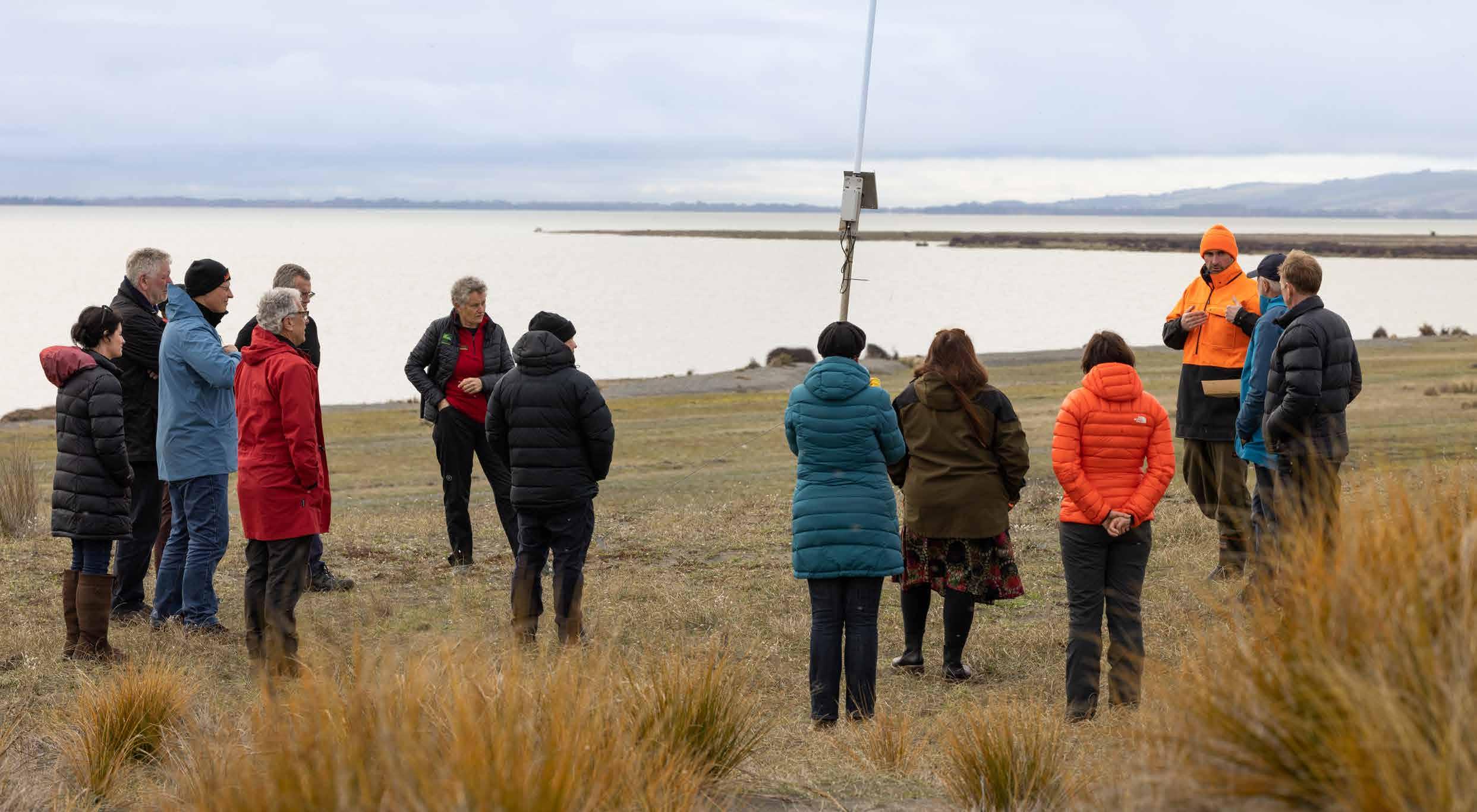
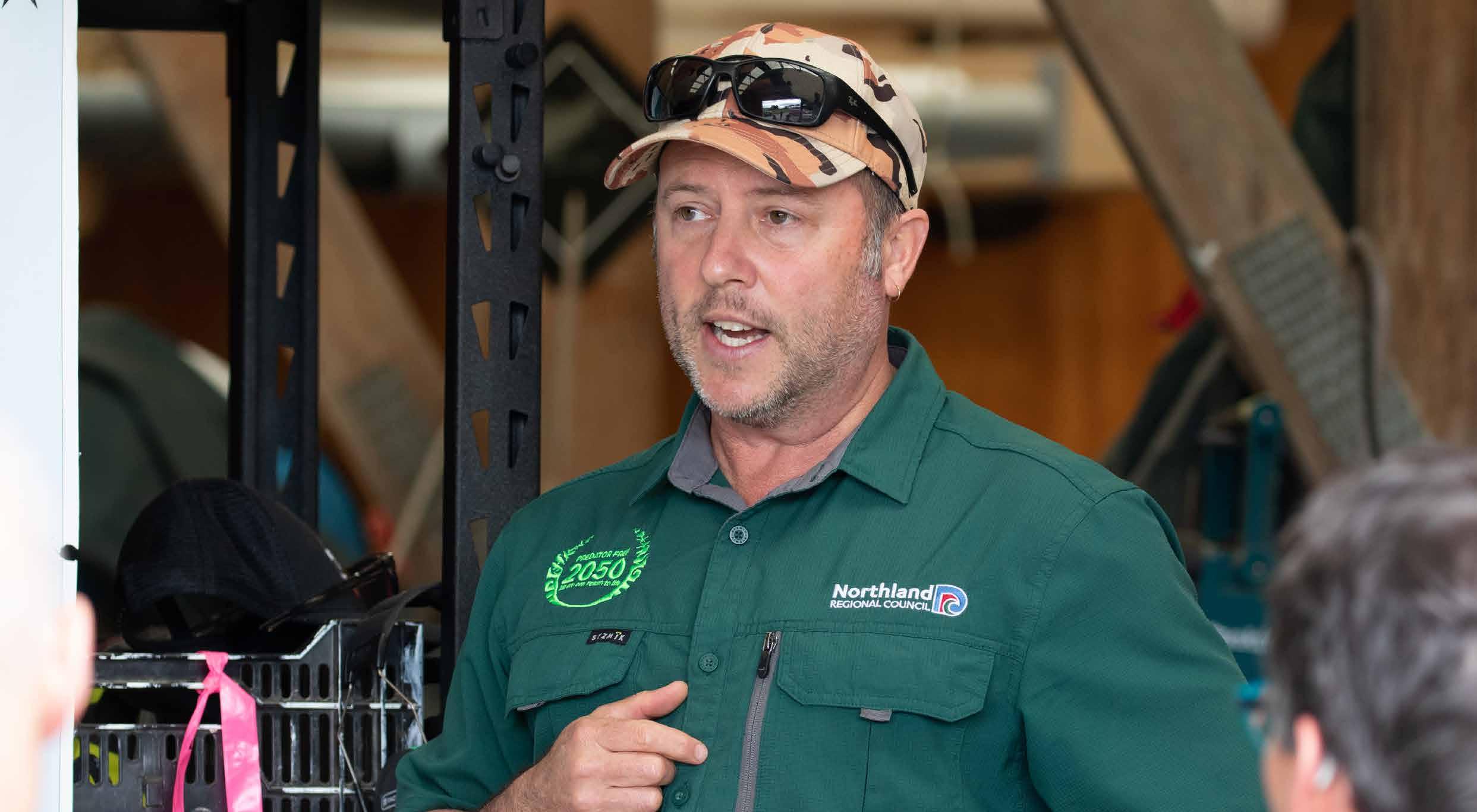
The project is fully committed to working alongside mana whenua so that kaitiakitanga can be exercised for the area, together. The input and guidance around tikanga, mātauranga, and insight into the te ao Māori world view is welcomed and integral for the project’s success.
The field team are working through from Bream Head/Te Whara, located in Whangārei Heads, and are now full steam ahead servicing traps, laying toxins, and heading into mop up stages in places. The fast pace of the mahi is down to the dedication and passion of the team, along with the community groups and those that whakapapa back to iwi/hapū/whānau of Whangārei.
Banks Peninsula
Laying a solid foundation
Banks Peninsula Conservation Trust has been working with farmers and landowners for 20 years. By 2018, a 14-way partnership was signed, including central and local government, rūnanga and community groups, and the Pest Free Banks Peninsula project was formed. The initial goal is to remove possums from a 23,000 ha Wildside area on the southeastern part of Banks Peninsula and to clear the 5,500 ha Kaitōrete Spit of mustelids, possums, hedgehogs and feral cats. But it wasn’t time to get hands on just yet.
An integral part of the project set up was ensuring mana whenua were actively involved in governance. Ngāi Tahu, and in particular the five rūnanga in whose rohe the project sits, have built strong relationships with the project. All of them see the value of ahi kā
in the project, growing jobs and strengthening the local community by caring for local biodiversity.
Building a new field team from scratch meant ensuring landowners and the PFBP team had been fully trained on Health & Safety procedures and precautions, including Site Specific Safety Plans with every landowner.
The project field work is now underway, including cutting over 40km of tracks through gorse in Misty Peaks council reserve and Hinewai Reserve (private trust). The field team is also starting trapping in the first sector on Kaitōrete, which is buffered by a community-led trapping programme at Taumutu.
PROJECT CASE STUDY
Oliver Hopwood, Field Lead, gives an update on the possum eradication project at Whangārei Heads.
Photo by Stuart Attwood.
PROJECT CASE STUDY
The Pest Free Banks Peninsula team led by Sarah Wilson, share their innovative technology with a number of the Predator Free board and team. Photo by Liz Pitcorn / Parallax Films.
23PREDATOR FREE 2050 LIMITED ANNUAL REPORT 2022
Vote Conservation Iwi led Provincial Growth Fund Community led Jobs for Nature Council led
Project name - status. Launched. Target hectares. PF2050 Limited contribution. Target completion. Short project description.
Pēwhairangi Whānui – Predator Free Bay of Islands - Pre-operational planning. Jul-21. 95,600ha. $4M of $15M. 2026. Targeting the three main peninsula in the area.
Predator Free Whangārei – Operational. Jul-20. 75,300ha. $6M of $27M. 2025. Aiming to eradicate possums from 8,600ha Whangārei Heads Peninsula.
Tū Mai Taonga – Pre-operational planning. Apr-21. 18,000ha. $3M of $6M. 2024. Iwi-led. Targeting rats, while working to rid Aotea of feral cats. Kawau Multi-species Predator Eradication Project - Pre-operational planning. Sep-21. 2,058ha. $1.3M of $4.85M. 2026. A step towards near-complete predator eradication on Hauraki Gulf islands.
Te Korowai o Waiheke – Operational. Sep-18. 9,221ha. $3M of $10.9M. 2023. Could be the world’s largest predator-free urban island.
Pest Free Kaipara – Feasibility. Sep-21. 100,000ha. $2M of $30M. 2026. Iwi-led, future expansion would make this the largest in the country.
Korehāhā Whakahau – Operational. Jun-20. 4,957ha. $2.4M of $5.6M. 2025. The first iwi-led project, improving skills for rangatahi.
Waikaremoana – Ceased. * Apr-21. 1,500ha. $1.7M of $3.3M. 2025. Iwi-led, making two peninsula on Waikaremoana and Waikareiti islands predator free. Taranaki Taku Tūranga – Towards Predator-Free Taranaki – Operational. May-18. 69,000ha. $12.5M of $49M. 2023.
The first PF2050 Ltd project. Completing a buffer zone around the national park.
Predator Free Hawke’s Bay – Operational. Jul-18. 53,400ha. $1.6M of $4.9M. 2022. Innovation driven by challenges of a farmland environment.
Capital Kiwi – Operational. Aug-18. 23,400ha (within the footprint of Predator Free Wellington). NA. 2027. On a mission to restore kiwi to the hills of Te Upoko o Te Ika / Wellington.
Predator Free Wellington – Operational. Aug-18. 30,000ha. $11.6M of $27M. 2027. Phasing across Wellington after successfully securing Miramar Peninsula.
As at 31 October 2022. Note: Total funding includes cash as well as in-kind funding and any co-funding from DOC.
* September 2022: Project agreement terminated by mutual agreement of the parties.
Taranaki
Mahia / Hawke’s Bay
Te Urewera
Bay of Islands
Whangārei
Whakatāne
Aotea Kawau
Waiheke
Kaipara
Capital KiwiWellington
Landscape Projects - North Island / Te Ika a Maui 25PREDATOR FREE 2050 LIMITED ANNUAL REPORT 2022
Vote Conservation Iwi led Provincial Growth Fund Community led Jobs for Nature Council led
Project name – status. Launched. Hectares. PF2050 Limited contribution. Target completion. Short project description.
Pest Free Onetahua – Operational. Sep-21. 12,000ha. $3M of $9M. 2026. Restoring the habitat for migratory shorebirds. Rangitoto Birdsong – Paused. * Apr-20. 18,580ha. $80K of $3.1M. 2025. Removing stoats – the last predator left on the island.
Predator Free Te Kinga – Operational. May-20. 27,700ha. $4.4M of $15.7M. 2025. Rerenga ki taonga o nga manu ki Kotuku Moana (Refuge of treasured birds belonging to Kotuku Whakaoho / Lake Brunner).
Pest Free Banks Peninsula – Operational. Aug-20. 28,497ha. $5.1M of $10.2M. 2025. The first Jobs for Nature project announced.
Predator Free South Westland – Operational. Mar-21. 96,000ha. $8.5M of $23M. 2024. Biggest land area covered by a project so far.
Predator Free Dunedin – Operational. Oct-18. 57,100ha. $7.8M of $16M. 2023. Engaging urban communities.
Predator Free Southland (Awarua) – Ceased. ** Dec-20. 65,000ha. $120K of 10.2M. Targeting the three main peninsula in the area.
Predator Free Chatham Islands – Feasibility. May-20. 77,888ha. $100K. NA. Restoring a seabird-driven ecosystem.
As at 31 October 2022. Note: Total funding includes cash as well as in-kind funding
any co-funding from DOC.
* November 2021: Funding withdrawn but agreement not terminated.
** September 2022: Project agreement terminated by mutual agreement of the parties.
D’Urville Island
Farewell Spit
Lake Brunner
South Westland
Banks Peninsula
Dunedin
Southland
and
Chatham Islands
Landscape Projects - South Island / Te Wai Pounamu and Chatham Islands / Wharekauri 27PREDATOR FREE 2050 LIMITED ANNUAL REPORT 2022
New Partners
Partnership is pivotal to the way we work. The coordinated and collective efforts of individuals, communities, central and local government, iwi, philanthropic organisations, non-government organisations, businesses, landowners, and science and research organisations are pivotal to the success of the Predator Free 2050 goal.
Results of a recent stakeholder survey sent to our partners shows strong appreciation and support for the role the Company has played in working towards the goal.
Over the past year, we have continued to build partnerships and collaboration across all spheres of our work: landscape projects, our Products to Projects initiative, and in our science and research. Since inception, we have built strong, high-trust partnerships with over 60 agencies, and work closely with several organisations, including the Department of Conservation and the Predator Free New Zealand Trust.
We have been strengthening our focus on our obligations and partnerships under Te Tiriti o Waitangi, and have partnered with mana whenua for our landscape projects Korehāhā Whakahau, Kaipara and Waikaremoana.15 The Aotea project is now iwi-led, and we are also working with iwi to build their capability to take on leadership of future projects.
We have also begun building new partnerships where we see value for the Predator Free 2050 goal, particularly around quantifying the wider benefits of predator eradication to strengthen the strategy.
In November 2021, we agreed to co-fund a new carbon sequestration accounting project, to explore how to measure or capture the carbon sequestration potential of predator eradication, with environmental non-government organisation Island Conservation and co-funding from philanthropic foundation Clare. The first stage of this work – underpinning system development – is now complete, and we will be looking next to support verification of the system.
Also under our research strategy that targets breakthrough science advances, we have contracted two new key partnerships:
The tactical genetic pest control project, targeting rats, for which Genomics Aotearoa are coordinating researchers from University of Otago, AgResearch, Plant & Food and Victoria University Wellington.
Co-funding the Science for Technological Innovation (SfTI) Biosecurity Technology Spearhead research project, which looks at using autonomous robotics for surveillance. This initiative has brought other agencies into the Predator Free programme, including University of Auckland, Scion, Victoria University of Wellington and Lincoln Agritech.
15. The Waikaremoana project agreement with Ngāi Tūhoe was terminated in September 2022 with the agreement of both parties.
Partnerships
– the path to success
We adopt a partnership-based approach to our funding agreements where we provide end-to-end support over the four project stages of concept, initiation, implementation, and completion. By working in partnership with projects, we can work through potential technical issues and identify and resolve risks as early as possible and gather and share lessons between landscape projects. This approach supports projects and the Company to be agile, innovative, and expedient, while building trusting and enduring partnerships.
We have worked hard to improve how we create and maintain genuine partnerships over the past year. A big part of that has been taking the time to talk with the communities and organisations we work with to understand how our processes support or hinder projects from getting started and being successful.
We know that partnerships are most likely to succeed when projects make the best use of local expertise and the results are achievable and clear. Many of our project partners are not equipped to manage the compliance and reporting requirements that accompany Jobs for Nature or Provincial Growth Fund funding. This year we have developed our internal reporting capability, including creating a reporting and compliance role, to better support our partners and ensure their resources are focused on eradicating predators and achieving the other outcomes expected from Jobs for Nature and Provincial Growth Fund funding. Supporting projects to meet their accountability obligations will also help to remove a barrier to new partners joining the programme.
29PREDATOR FREE 2050 LIMITED ANNUAL REPORT 2022
New Science
First research strategy
The 2017–2020 research strategy laid the foundation for strong successes in possum eradication, most notably in the South Westland backcountry, and our strategic focus is now on eradicating rats, stoats and other mustelids.
Second research strategy
Our second research strategy, covering 2020–2024, will contribute to the interim national goal of a breakthrough science solution capable of eradicating at least one of the target predators from mainland New Zealand by 2025.
This is an ambitious goal. It has never been achieved before anywhere in the world, and to succeed, we must build an environment that fosters and builds on new and emerging ideas and technologies across the full range of science disciplines.
It is critical to create new capabilities in science and research that is currently under-represented and under-resourced in New Zealand. This is particularly so in the nonecology, organismal sciences that focus on the biology of our target predators and how they work, for the purpose of developing new control tools and techniques.
This capability will come from supporting university students and early-career researchers working in relevant Predator Free 2050 science, as well as supporting Māori capability in STEM (science, technology, engineering and mathematics) research disciplines.
To date, we have contracted $13.8 million for new science and research, $10.8 million of this in FY22.
3M
2018–21 2022 TOTAL $10.8M 13.8M
Much of this investment is supported by co-funding, through collaboration with national and international research agencies and philanthropy.

We stay informed of international breakthrough science developments through
▪ membership of the International Union for Conservation of Nature Task Force on Synthetic Biology
▪ membership of the United Nations Convention on Biological Diversity Ad Hoc Technical Expert Group on Synthetic Biology
▪ assisting others (such as the Chilean Ministry for the Environment) with invasive species management planning
▪ frequently showcasing our research portfolio both nationally and internationally.
We run transparent and contestable funding application rounds for breakthrough science, in addition to directly investing in areas that will help in the early stages of the eradication strategy in partnership with key providers. We provide co-funding and advisory support to researchers who submit funding bids to government agencies for relevant research.
We have funded 42 scientific projects and research studies to date. During FY22, we contracted 18 new research projects from our second research strategy (2020–2024), including 10 new partnerships and agencies conducting research for Predator Free 2050.
We also provided top-up funding to enable kiore and stoat population research to be finalised from our first research strategy.
31PREDATOR FREE 2050 LIMITED ANNUAL REPORT 2022
Research priorities
Science breakthroughs are needed more particularly for rats than mustelids, and more for mustelids than possums, and rat eradication at scale in backcountry may be particularly tricky. Our second research strategy (2020–2024) concentrates our funding efforts in four areas:
Priority research
Priority research looks for the breakthrough developments that will be needed to achieve the Predator Free 2050 goal, but which do not yet exist.
Capability development
Capability development focuses on building the knowledge and skills needed to advance the work.
▪ Reproduction and survival genes in possums (Alana Alexander)
▪ Enabling possum fertility control (University of Otago)
▪ Predator monitoring using eDNA (University of Otago)
▪ Can we turn stoat breeding off? (Manaaki Whenua)
▪ Tactical genetic control of rats (Genomics Aotearoa)
▪ Detecting the last predators (SfTI Challenge)
▪ Potential social and ethical challenges to Predator Free 2050 (Ally Palmer)
▪ Genomic applications for mustelid control (Florian Pichlmueller)
▪ Modelling multi-species genetic pest control (Anna Clark)
▪ Integrating control tools and attractants (Brittany Graham)
▪ Audio predator detection and luring (Ben McEwen)
▪ Predator management strategy modelling (Zachary Carter)
Contracts begun in FY22
Research outputs
Insurance research Insurance research is about incremental improvements that will support continued progress while we wait for the priority research to produce positive results.
▪ Eradicating the last 1% (Manaaki Whenua)
▪ Sterilisation of pests for conservation (University of Otago)
▪ Embedded R&D (ZIP)
Enabling elements
Enabling elements support the current eradication work.
Landscape Genetics of Brushtail Possums in New Zealand
Nimeshika Pattabiraman, Massey University
Publication: Pattabiraman, N., Morgan-Richards, M., Powlesland, R., & Trewick, S. A. (2021). Unrestricted gene flow between two subspecies of translocated brushtail possums (Trichosurus vulpecula) in Aotearoa New Zealand. Biological Invasions 24, 247–260
Predator Management Strategy Modelling Zachary Carter, University of Auckland
Publication: Carter, Z. T., Hanson, J. O., Perry, G. L. W., & Russell, J. C. (2022). Incorporating management action suitability in conservation plans. Journal of Applied Ecology https://doi.org/10.1111/1365-2664.14258
Embedded R&D
Zero Invasive Predators
Publication: Nichols, M., Dent, J., & Edwards, A. (2022). Toxin-laced rat carcass baits for stoat elimination. New Zealand Journal of Ecology 46(1), 3453
Carbon Accounting
Island Conservation
▪ Carbon accounting (Island Conservation)
▪ TrapNZ backbone funding (Groundtruth Limited) – a CRM with GIS tracking of management actions
▪ Conservation Activity Management System (EcoNet)
Publication: Will, D., Roberts, G., McKenzie-McHarg, H., Thieme, A., Sexton, J. O., & Cosentino, B. (2022). A natural capital accounting system for island-marine ecosystem restorations. Island Conservation
Social Research on Novel Pest Control Methods
Manaaki Whenua
Publication: MacDonald, E. A., Neff, M, B,, Edwards, E., Medvecky, F., & Balanovic, J. (2022). Conservation pest control with new technologies: public perceptions. Journal of the Royal Society of New Zealand 52(1), 95–107
33PREDATOR FREE 2050 LIMITED ANNUAL REPORT 2022
New findings
We now have a better understanding of the genetics of another target species, the kiore, through full genome sequencing led by Genomics Aotearoa. This is another world-first to go alongside the previously supported ship rat and stoat genomes, and will enable the sector to develop better ways to target them for eradication.
We also have a better understanding of how stoats disperse across the landscape, thanks to a world-first landscape genetic connectivity model, led by Manaaki Whenua.
Zero Invasive Predators’ new 1080 to Zero approach is now driving elimination over large parts of South Westland. Zero Invasive Predators has also developed an effective technique for targeting the remaining stoats in an area using a single poisoned rat as bait.
A multi-national collaboration led by Island Conservation has seen initial findings which begin to quantify the carbon benefits from predator eradication.
Finally, a key finding from modelling by University of Auckland student Zachary Carter is that current tools and approaches are insufficient even for national suppression. The work has been published in the Journal of Applied Ecology, and we will be monitoring developments closely.
Capability development
The first investments driven by our new research strategy include funding six doctoral students and postdoctoral researchers at four of our universities, helping build the new research and scientific capability that Aotearoa New Zealand needs to achieve the Predator Free 2050 goal.
Alana Alexander (Postdoctoral researcher, University of Otago)
Reproduction and survival genes in possums
Alana has focussed on investigating existing genetic data in detail, establishing a statistical ‘pipeline’ for advanced analyses, and honing her te reo Māori skills for knowledge sharing.
Ally Palmer (Postdoctoral researcher, University of Otago)
Potential social and ethical challenges to Predator Free 2050
Ally has spent much of her first year listening to the thoughts and opinions of a range of stakeholders through around 80 in-depth interviews, discussions, talks and seminars.
Florian Pichlmueller (Postdoctoral researcher, University of Auckland)
Genomic applications for mustelid control
Florian has been honing methods to extract high quality RNA, and further advancing his analytical skills, particularly to ensure that all findings are robust and reproducible.
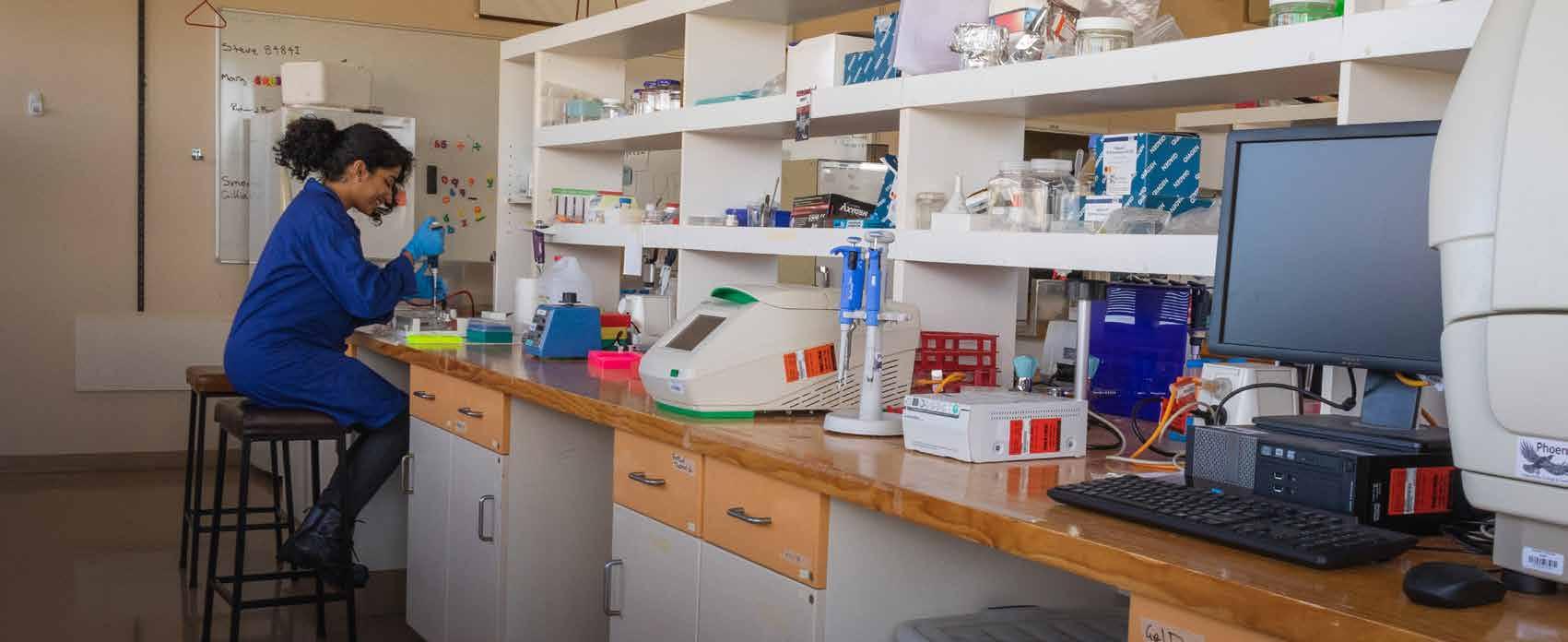

Anna Clark (PhD candidate, University of Otago)
Modelling multi-species genetic pest control
Anna has been upskilling in complex modelling approaches that account for biological realism, and reviewing the broad literature for the best evidence for her model to use.
Brittany Graham (PhD candidate, Lincoln University)
Integrating control tools and attractants
Brittany has been designing and conducting field trials to inform on predator home ranges and their responses to prototype audio, visual, and combined audio/visual lures.
Ben McEwen (PhD candidate, Canterbury University)
Audio predator detection and luring
Ben has made rapid advances in the ‘denoising’ of audio to improve predator surveillance sensitivity, and the automated identification of audio footage of surveillance interest.
Nimeshika Pattabiraman, a 2019 funding recipient investigating brushtail possum population genetics.
Photo by David Carmele.
35PREDATOR FREE 2050 LIMITED ANNUAL REPORT 2022
The eTrapper Baitsense is a low-cost multi-purpose sensor that reports on the volume of bait within a bait station.
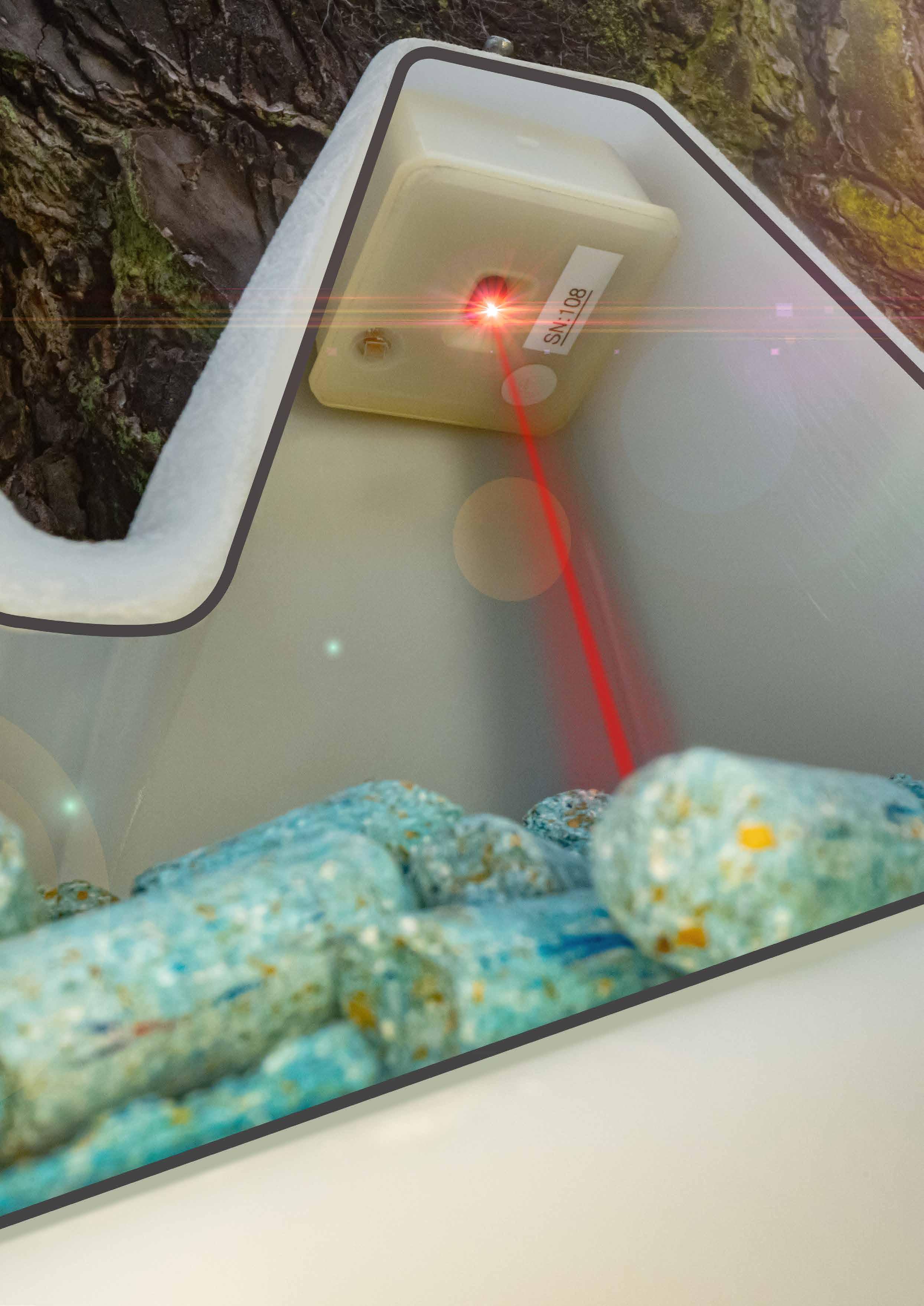
Products to Projects
The escalation of large-scale landscape projects has created a demand for new and improved tools to get the job of predator eradication done now, including communication, detection and trapping, and sharing of acquired knowledge of best practice in how these tools are used.
Using Provincial Growth Fund and Jobs for Nature funding, we are investing in the development and production of the tools needed to support the work of our landscape projects, and at the same time building new regional business opportunities and creating jobs.
Products to Projects funding provides support to take proven ideas from research and make them available as effective tools, technologies and approaches that can be applied on a landscape scale.
In 2019, the first tranche of investment went into the development of a range of products and application projects: six new traps, three long-life lures and lure dispensers, four communication and image recognition devices, and two toxin formulation and application projects.
Products to Projects is on track to deliver 30 products from 24 projects by December 2024, supporting landscape projects to achieve predator eradication. Seven of these products are already in use in the field.
The second tranche of funding was committed in 2021 to develop a further 15 new products and best practice guides. In total, we have now disbursed or contracted $11.8 million for new product development.
Products currently available
Backcountry camera – a thermal detection video camera complete with onboard image recognition AI and remote reporting.*
PoaUku (clay lure) – a long-life ceramic lure that can attract predators to traps or other devices for over six months.*
OutPost – an automated reporting system to enable timely and costeffective transfer of field data from landscape-scale projects.
MotoLure – a mechanical lure dispenser that can deliver a preset amount of lure for up to one year without manual service.
AT220 – an automatic, self-resetting trap for both possums and rats.
High Interaction Rate Trap – a motionsensor triggered live trap for targeting remaining hard-to-control individuals.
PosStop – a tried-and-true live capture possum trap, the PCR No. 1 leg-hold, in an effective raised set with remote locking.
*New in FY22
Photo by Shaun Lee.
37PREDATOR FREE 2050 LIMITED ANNUAL REPORT 2022
Manaaki Whenua has extended its AI image recognition model to 11 species (bird, cat, ferret, hedgehog, kiwi, rabbit, mouse, possum, rat, stoat, and wallaby) as well as livestock, and improved accuracy to 73% for night-time; 85% for daytime.
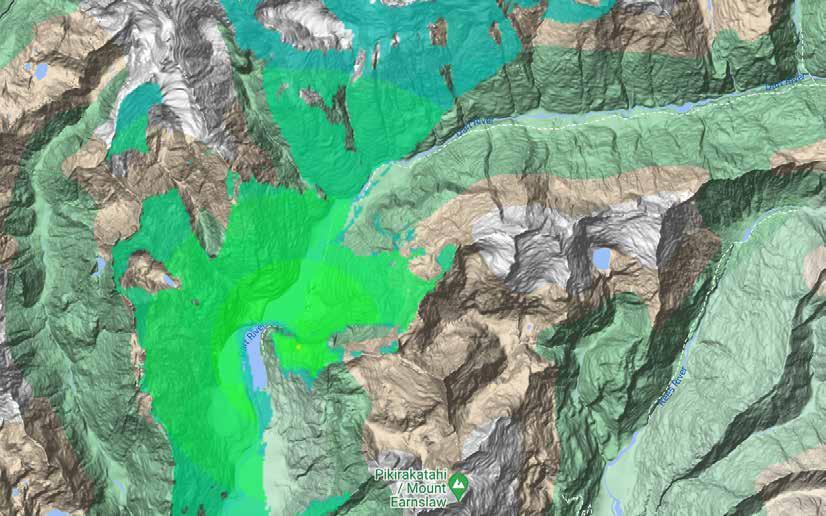
The Cacophony Project’s High Interaction Rate Trap v1 is commercially available, with funding to help secure jobs, and further funding to manufacture a second version of the trap.
Zero Invasive Predators (ZIP) has 350 of its thermal backcountry cameras deployed for predator detection, complete with onboard image recognition AI and remote reporting, with another 150 being manufactured.
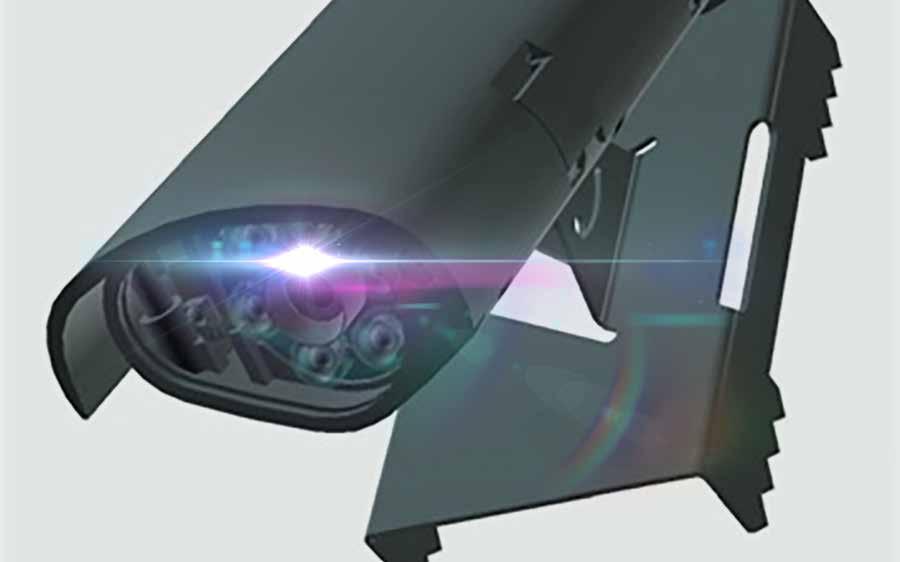
NZ AutoTraps (based in Whakatāne) has surpassed 10,000 units sold of its AT220 Automatic Possum and Rat Trap, supported by PF2050 Limited funding from the Provincial Growth Fund.
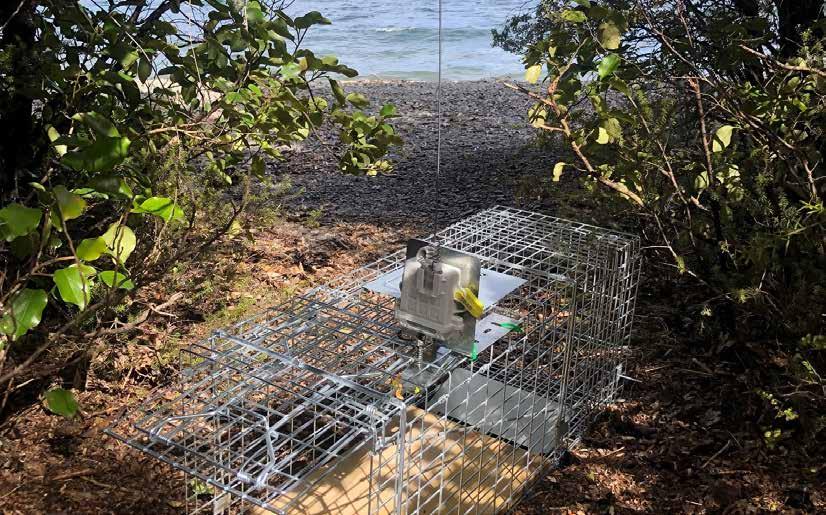

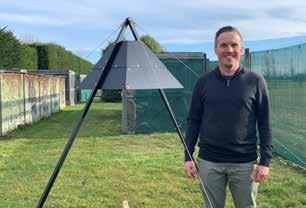
We funded our first iwi-led investment: Te Rūnanga o Ngāti Awa will be producing guidelines for landscape projects on Eradications and Traditional Indigenous Knowledge.
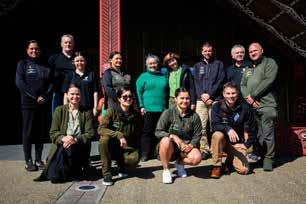
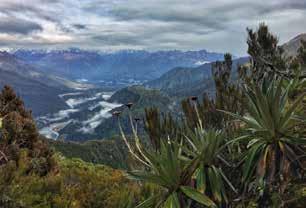
We have added 3 new developers since Tranche 1 – Critter Solutions Limited, Encounter Solutions Limited, and eTrapper Limited.
We have funded a contract with ZIP to commercialise the tools and approaches developed in Predator Free South Westland.
We secured additional co-funding from Auckland Council for both an existing Tranche 1 project (Invasive Pest Control Limited – Norbormide) and a new Tranche 2 project (Encounter Solutions Limited).
 By Critter Solutions Limited
By Encounter Solutions Limited
By Critter Solutions Limited
By Encounter Solutions Limited
Low-Cost, Low-Power, Long-Life Smart Camera Monitoring System
Intended to help projects overcome current camera limitations, including false triggers, neophobia, and high equipment and labour costs. To include a user-friendly online data management interface and the ability to mount it on a tree/post.
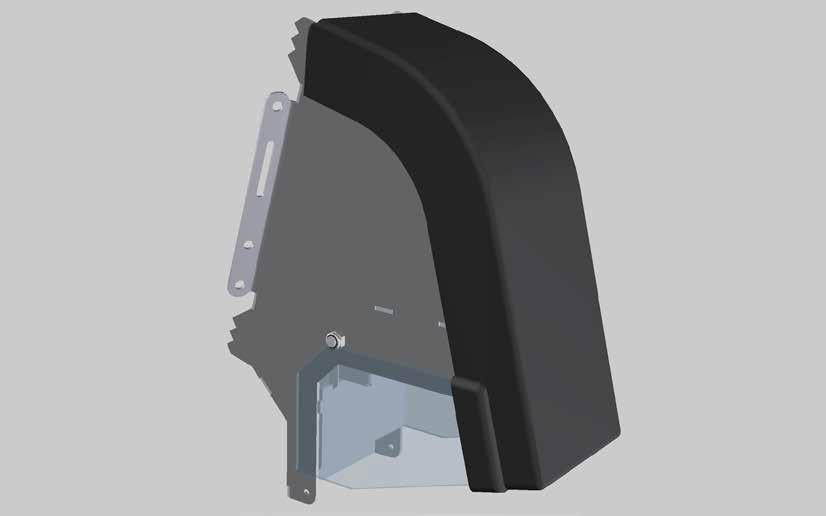
Smart Live Capture Network Solutions
Enhancing Celium wireless sensor networks so that traps can be automatically locked on a schedule or via remote command, reducing daylight captures of non-target species and assisting when teams can’t visit traps due to illness, poor weather or site access issues.
Species-Specific Kill Traps Using CritterPic® AI Technology
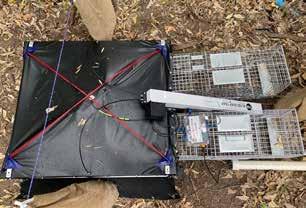
These smart self-resetting kill traps for possums, rats and stoats will prevent non-target species such as native birds from being harmed.
Landscape-Scale Wireless Trap Monitoring Best Practice
Best practice guidance for remote monitoring systems for trapping programmes on how these systems work, their suitability for different landscapes, and how best to use remote monitoring in the different phases of eradication.

2021/22 Highlights
Products and best practice guides funded this year
+3 39PREDATOR FREE 2050 LIMITED ANNUAL REPORT 2022
By Envico Technologies Limited
By Ground Truth
By The Cacophony Project
By Korehāhā Whakahau
The Rat Spitfire
An automated, long-life, device capable of killing c. 100 rats between refills and can be left unattended for 1 year. It has an automatic lure system, an electronic trigger counter, and Bluetooth connectivity for long-term use, reducing labour time and costs and reducing risk to non-target species.
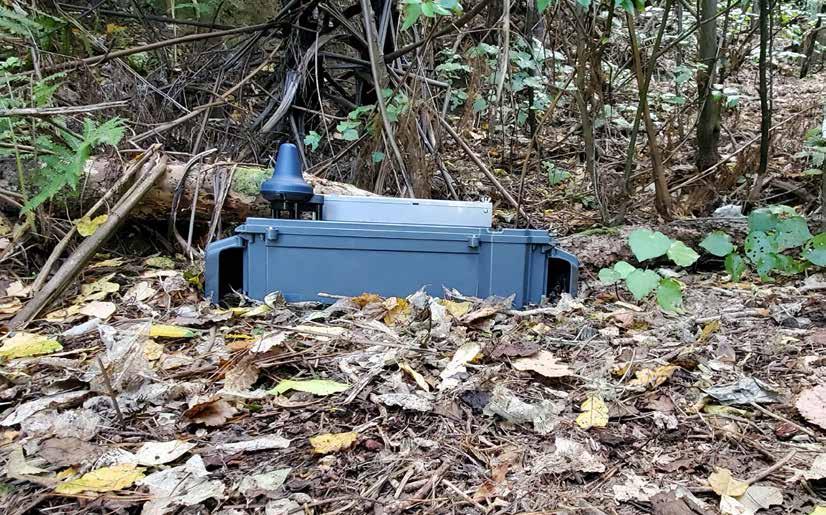
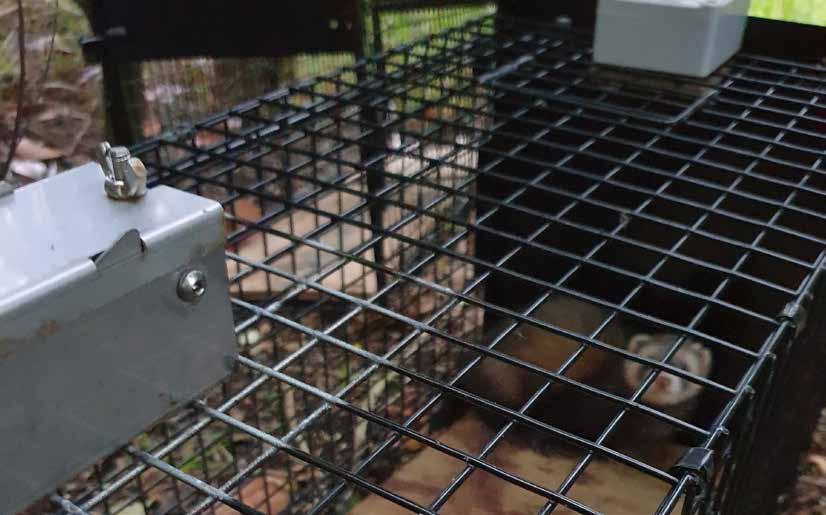
Planning and Implementation Functions for Landscape-Scale Eradication Projects
A ‘deployment’ module for the existing trap.nz trapping database to support new projects to rollout eradication efforts. It reduces the work required for planning and removes the need for specialist software and skills.
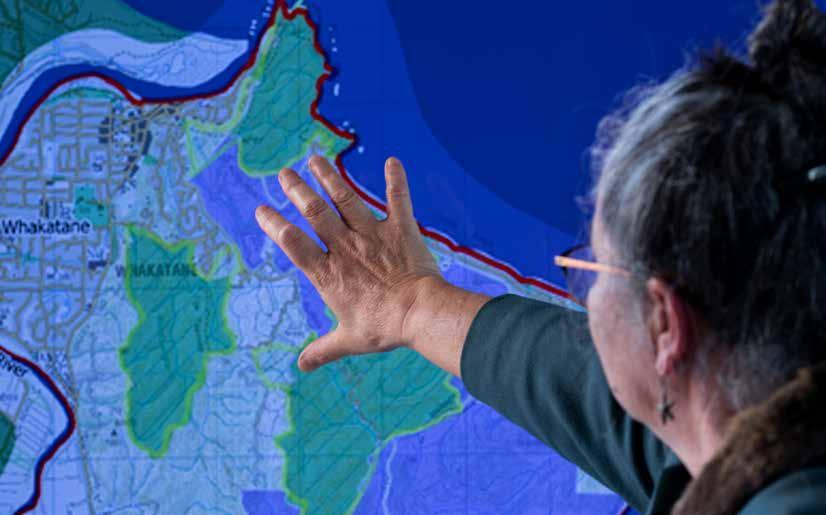
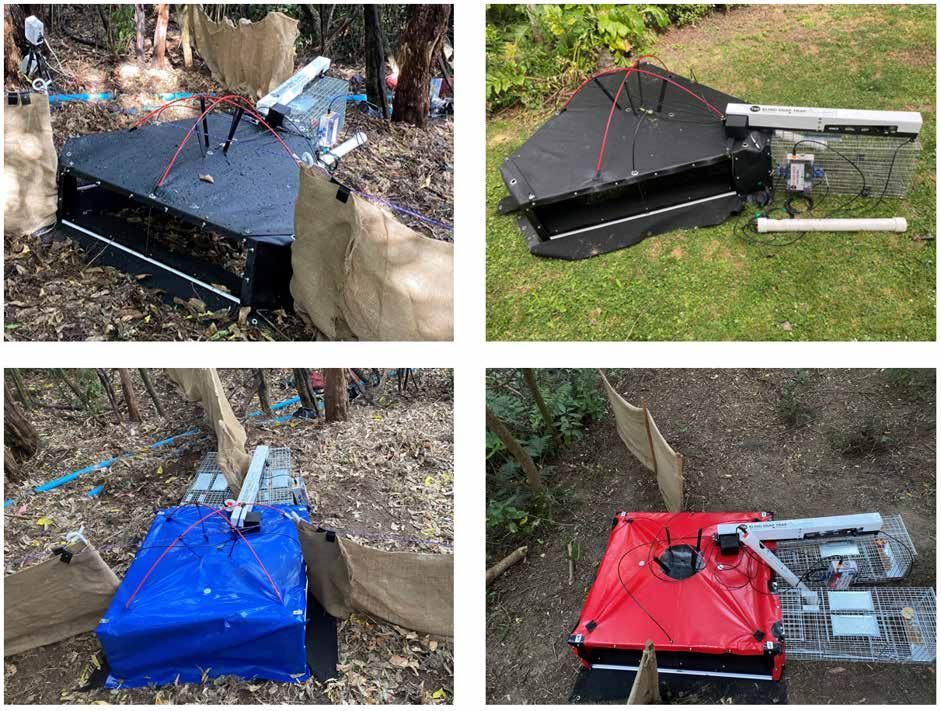 By Zero Invasive Predators (ZIP)
By eTrapper Limited
By Zero Invasive Predators (ZIP)
By eTrapper Limited
Baitsense
A low-cost, multi-purpose sensor that reports on the volume of bait within a bait station, allowing operators to increase efficiency and guide efforts to achieve eradication within project areas.
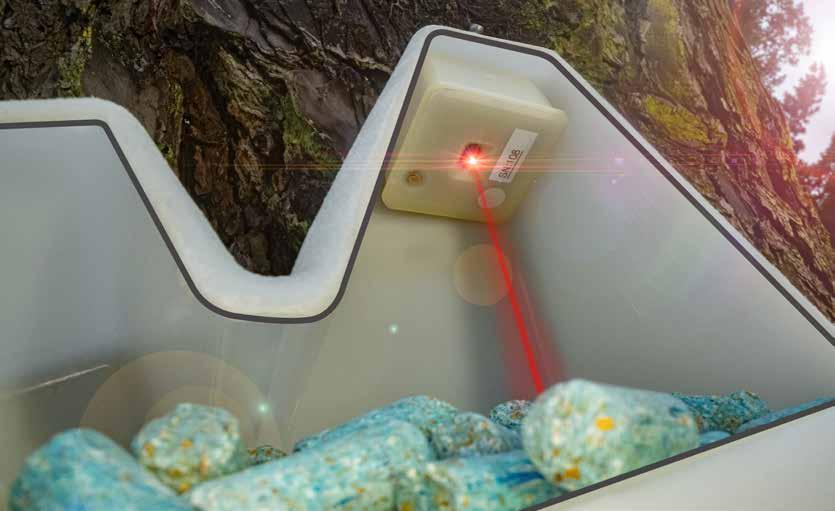
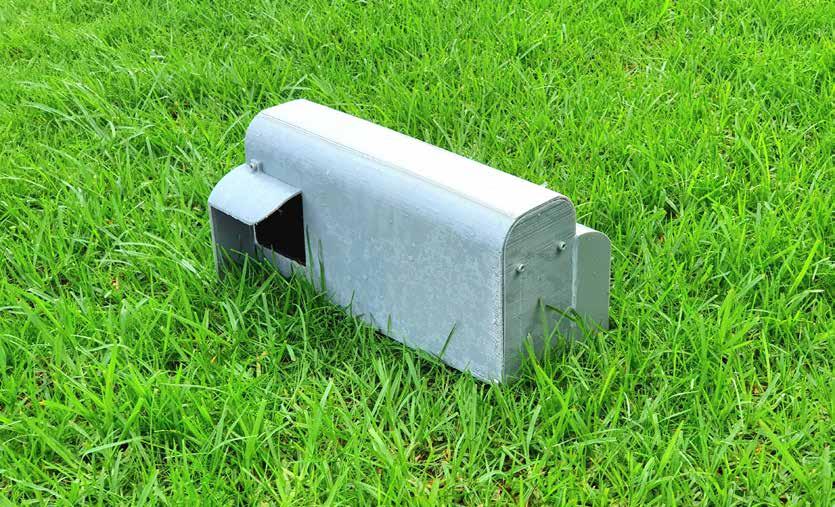
Open Sensor Software Service for trap.nz
An open software service that allows sensor devices to communicate directly with the online trap.nz database via off-the-shelf gateway devices, rather than needing to go through subscription-based communication services.

ZIP Tranche 2 Products to Projects (3 tools and 2 guides)
This funding supports the availability of the tools and approaches being developed by ZIP for other projects to use beyond Predator Free South Westland, including a remote reporting system, a wildlifefriendly bait station, guidance for the use of toxin-laced rodents, and the ZIPinn Trap Mk2.
41PREDATOR FREE 2050 LIMITED ANNUAL REPORT 2022
Predator Free South Westland

Zero Invasive Predators
Progress is tracking well, with 45 percent (43,600ha) of the total project area now under active management to maintain elimination of possums, rats and stoats. This includes the Perth Valley and Butler-Whataroa blocks in the backcountry and the South Ōkārito block on the coast. The project demonstrates how high alps and fast-flowing rivers can be used as natural boundaries to keep areas free from predators.
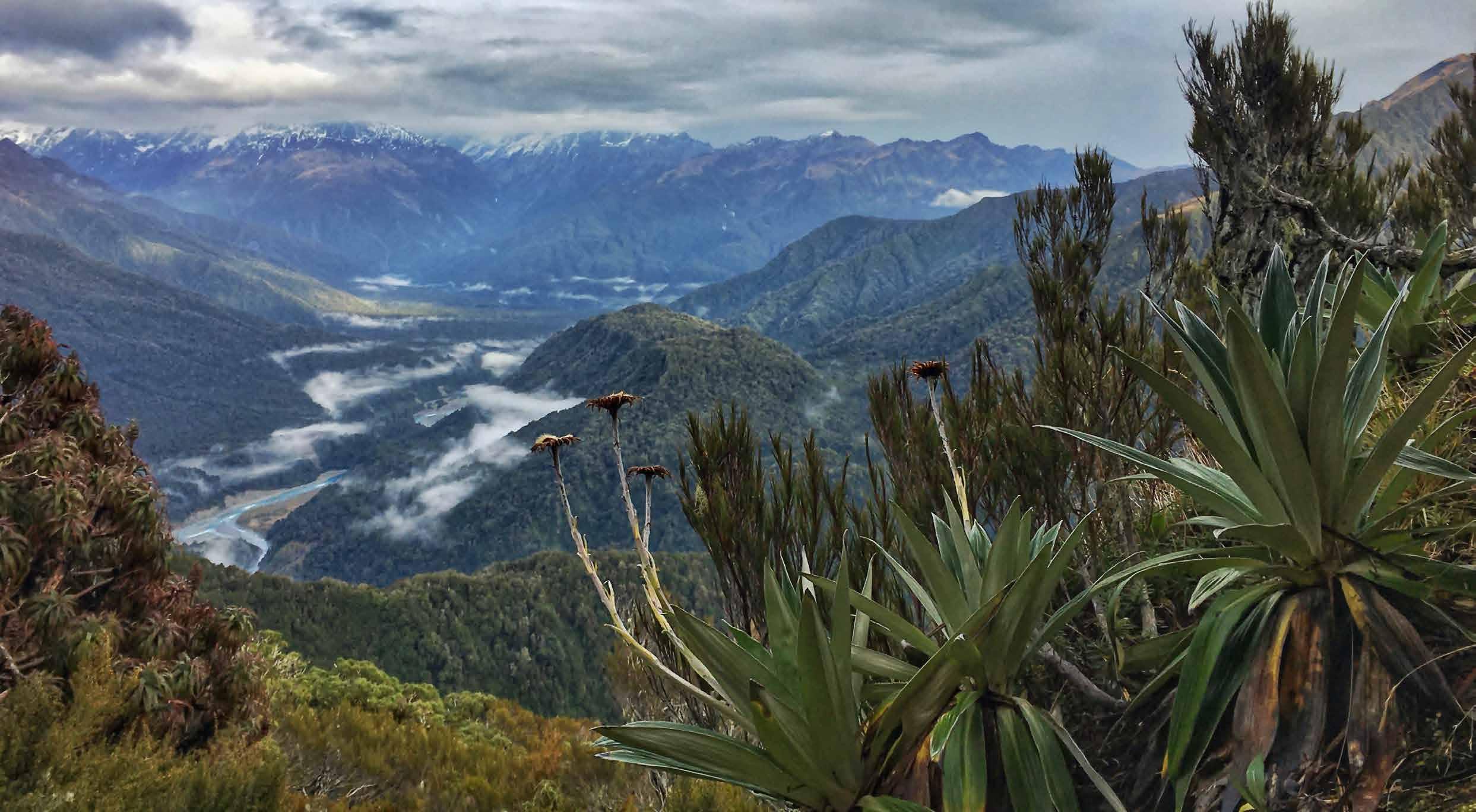
Elimination was achieved with a combination of approaches, but primarily by the application of the new 1080 to Zero control model (developed with support from Predator Free 2050 Limited’s research strategy) followed by the mopping-up of survivors through multiple, more targeted, methods.
Survivor detection for moppingup, demonstrating elimination success, and now the detection of re-invaders for incursion control is achieved through intense surveillance, which relies heavily on a remote network of thermal cameras using AI image recognition, developed with support from Predator Free 2050 Limited’s Products to Projects.
New products – the path to success
There have been many research and technical advances developed in the laboratories and workshops of researchers and developers in recent years that are yet to be applied in the field.
Through Products to Projects, we are supporting the process of getting these early-stage products or prototypes into the field, so that these research advances can have real impact on the ground and help achieve the Predator Free 2050 goal.
Moving ahead, we also wish to drive greater support and resourcing to test new tools and approaches on site at the landscape projects to maximise the impact of these tools for predator eradication.
SCIENCE CASE STUDY
Zero Invasive Predators conducts technical research in the vast and diverse landscape of South Westland.
Photo by Chad Cottle.
43PREDATOR FREE 2050 LIMITED ANNUAL REPORT 2022
Contributing to sector-wide thinking
Knowledge sharing
We have recruited a knowledge broker to help projects and developers share knowledge.
The Predator Free 2050 Limited team has shared our knowledge with the wider sector, both nationally and internationally, throughout the year, as well as helped project teams to learn from and support each other.
Science for Technical Innovation National Science Challenge
Our science director is part of the advisory group for the Science for Technical Innovation National Science Challenge (SfTI) research into connected robotics for remote, autonomous predator detection and control as part of its Biosecurity Tech Spearhead research project.
The Company’s annual landscape project hui was held in Upper Hutt in May 2022 with 89 attendees from the landscape projects and other invited external participants.
Ngāti Awa have held, with our support, a wānanga for our landscape projects that was focused on supporting them to engage and work with tangata whenua and better understand the role of mātauranga Māori in predator eradication work. This took place in early September, delayed from March due to Covid-19.
We have held two webinars for landscape projects to share knowledge on topics including project management of largescale projects, and published six newsletters for landscape projects.
Our R&D project support manager presented on our Products to Projects tools that are in development to a wide audience of stakeholders and community group members through the Predator Free New Zealand Trust’s online seminar series.

Staff continue to participate in the national Predator Free 2050 collaborative working groups where it aligns with our remit.
One of our project support managers continues to participate on Strategic Outcome 5 of the Biological Heritage National Science Challenge, which is based on decision-making tools for Predator Free 2050 outcomes.
Our science director assisted the Department of Conservation with the panel and interview process for their latest Tools to Market funding round and is making ongoing contributions to the DOC Kākāpō Recovery group.
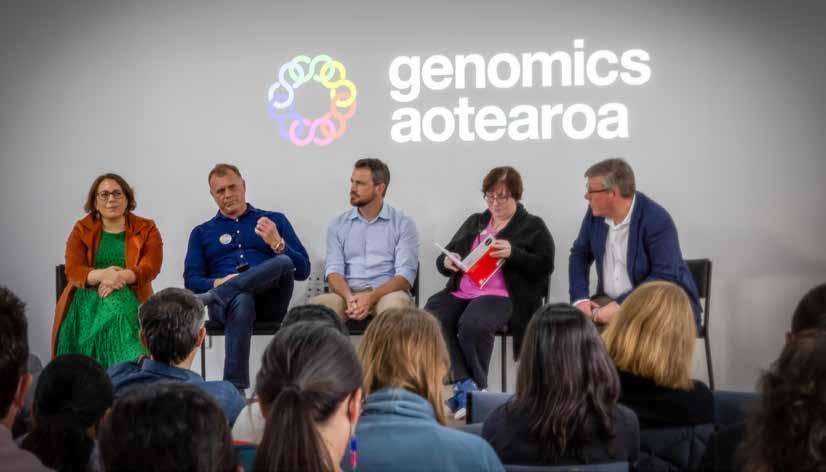
International engagement
Our science director is on the Chilean Ministry of the Environment advisory group, assisting with their work to prioritise invasive species management.
Our science director also (virtually) presented at and engaged in a panel session on International Union for Conservation of Nature (IUCN) policy development for synthetic biology at the 2021 IUCN World Conservation Congress. The Congress discussed the impacts of biotechnology, both good and bad, on conservation. Collaborative efforts saw motion 075 passed, to continue developing a policy for the IUCN on this topic, that is to be debated and voted on at the next Congress in 2024.
Our science director: attended (virtually) the Gene Drive Research Forum 2021 annual meeting on ‘Connecting theoretical/conceptual and applied stakeholder engagement’ was part of the ‘End-user engagement’ panel at the 2022 Genomics Aotearoa Annual General Meeting.
Our team has given a range of national and international presentations on: the current progress and future pathways to the Predator Free 2050 goal the Company’s investments in landscape, science and product development projects the research strategy for Predator Free 2050 international governance of synthetic biology (modern biotechnology) research and approaches.
The team has also presented to: NZ Biosecurity Institute – National Education and Training Seminar Predator Free New Zealand Trust – Apprentice workshop Rotary Club of Central Melbourne Restore Hibiscus and Bays network Pest Free Waitākere Ranges network
End-user engagement panel at the 2022 Genomics Aotearoa Annual General Meeting
45
Operations
As our funding has grown, the Predator Free 2050 Limited board approved increased resources for the assurance function to support robust reporting systems for a greater number of projects. These additional resources support a number of improvements being implemented following the recent review that will further enhance our assurance framework.
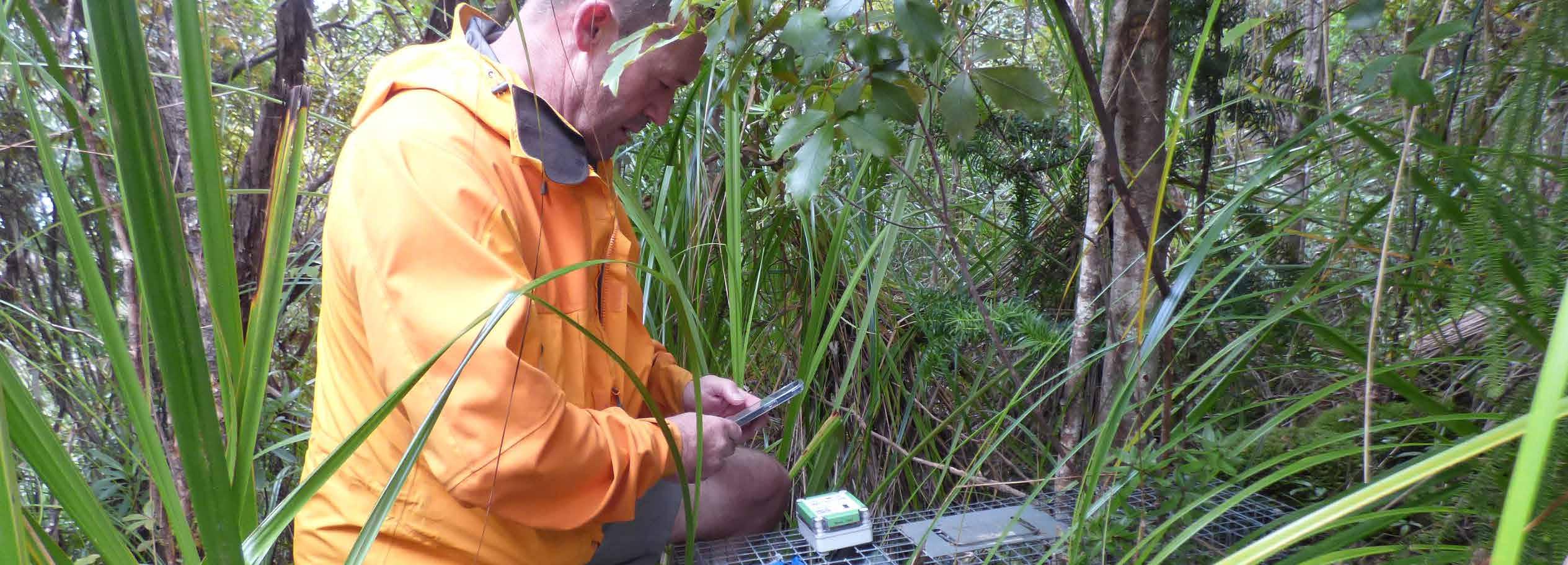

Stakeholder survey
Our Statement of Performance Expectations goal was for 75 percent stakeholder satisfaction.
A stakeholder satisfaction survey was conducted in June, that asked stakeholders to rank their overall satisfaction with the Company on a scale of 1 to 5.
Responses were received from 52 stakeholders, who rated their overall satisfaction with the work of, and communications from, the Company on a scale of 1 to 5. 78% of respondents responded with 3 out of 5 or higher. Almost half the respondents were from landscape projects.
We ranked highly in recent interactions, collaboration and clear communication. Areas where we can improve are our listening and responsiveness, effectiveness in the sector, and the website.
Very favourable responses were received for the Company’s technical newsletter, Field Notes, and general text responses were largely positive in tone. Three examples of the feedback are:
Statement of performance
Supportive of product developers and the challenges through covid. Shared goals and understanding in our collaboration. (Products to Projects funding recipient respondent.)
Be more collaborative and listen to others in the sector a bit more. (Conservation sector respondent.)
Focused, innovative, agile, independent, essential for conservation in Aotearoa, not DOC, outcomes focused, flexible. (Landscape Project – Community Trust respondent.)
Dave Braddock (Finance and IT Manager for Tū Mai Taonga), monitors a cat trap on Aotea / Great Barrier Island.
Photo by Melissa Brignall Theyer.
47PREDATOR FREE 2050 LIMITED ANNUAL REPORT 2022
New landscapes
To fund eradication of predators on large, often privatelyowned, landscapes and defend them from reinvasion.
Targets Achievements Commentary
Support landscapescale predator eradication and control across 800,000 hectares.
Partially achieved As at 30 June 2022, landscape projects were managing 451,000ha towards eradication. Landscape projects are forecast to be managing over 823,000ha for predator eradication and suppression by 30 June 2024 when projects currently in their detailed feasibility stage become operational.16, 17
Distribute $6.98M of Vote Conservation funding to 6 contracted large landscape projects and retain at least a 2:1 co-funding commitment.
Partially achieved $5.38M of Vote Conservation funding has been distributed to projects. This is in line with our forecasted year-end projection.
Withdrawal of the investment in Rangitoto Birdsong is the main reason for the underspend.
The co-funding ratio18 is expected to track at 2:1 over the term of the contracted projects.
Distribute $3.59M of Provincial Growth Fund allocation to 3 contracted large landscape projects and retain at least a 2:1 co-funding commitment.
Partially achieved $1.920M of Provincial Growth Fund has been disbursed to two projects. This is actual spend of $2.335M offset by a FY21 accrual release of $0.415M for PF Lake Brunner, which was not disbursed due to project operational delays.
A $1.6M spend has been deferred to FY23 due to operational delays caused by threatened species interaction. This is for West Coast Regional Council and is made up of $1.264M plus the FY21 accrual release of $0.415M.
The co-funding ratio19 is expected to track at 2:1 over the term of the contracted projects.
16. In previous years, we have reported on the total hectares targeted by projects to provide suppression and eradication over the duration of the project. This is now reported above as the forecast area to 30 June 2024. In addition to this, to provide context of progress towards the forecast as at 30 June 2022, we have reported the area where current operations are happening.
17. As at 31 October 2022, the forecast to June 2024 is now the contracted area for 17 projects, or 757,000ha.
18. For the co-funding calculation, see p.58.
19. For the co-funding calculation, see p.58.
Targets Achievements Commentary
Distribute $17.7M to 15 large landscape projects (10 new and 5 extension or acceleration), funded through Budget 2020/Jobs for Nature.
Generate 225–24020 project jobs (using Jobs for Nature FTE calculation). Target at least 1.5:1 cofunding commitment as measured over the life of the projects
Partially achieved Partially achieved
$10.575M of Jobs for Nature funding has been disbursed across 12 projects.
Delayed investment in various projects due to several projects being delayed in feasibility stage, and operational delays. This has generated 179 FTEs (since July 2020).21
The co-funding ratio19 is on track to meet 1.5:1 over the term of the contracted projects.
Distribute $1.5M from Budget 2020/Jobs for Nature allocation to new product development and system support.
Generate 7–10 FTE jobs (using Jobs for Nature FTE calculation).
Achieved Partially achieved
$2.869M of Jobs for Nature funding has been disbursed.
This is an overspend funded from FY23 allocation.
This has generated 20 FTEs (since July 2020).22
Distribute $0.883M of Provincial Growth Fund allocation to contracted Products to Projects parties.
Complete monthly and quarterly Jobs for Nature reporting, quarterly monitoring and reporting cycles during the financial year with contracted large landscape projects.
Host one Project Coordination Workshop by the end of Q4 FY22 and facilitate exchange of operational and research learning between projects.
Partially achieved $0.510M of Provincial Growth Fund has been disbursed.
Achieved Monthly and quarterly Jobs for Nature reporting to DOC is up to date.
Successfully implement a new end-to-end project support model that supports learning, knowledge transfer and scaled operations.
Achieved Achieved
The Landscape Project Coordination workshop was held in May and was well attended and received.
The wānanga planned for this year was delayed due to Covid-19 and will now be delivered in September.
We have implemented a new partnershipbased project support model, which is being enhanced with recruitment of new company roles, including the knowledge broker.
20. All job targets in the Statement of Performance Expectation are intended to be cumulative over the term of the Jobs for Nature funding.
21. During FY22, 106 FTEs were generated.
22. During FY22, 19 FTEs were generated.
49PREDATOR FREE 2050 LIMITED ANNUAL REPORT 2022
New partners
To recruit new participants to conservation, including third-party funders, landowners, and organisations to engage in predator control.
Targets Achievements Commentary
With partners, incubate and maintain a list of 20 pipeline projects capable of being investment-ready over the next 10 years.
Advise project consortia on developing high-quality, technically feasible projects.
Achieved A pipeline of projects is maintained, but the Company’s emphasis has been on mobilising current projects to realise eradication and Jobs for Nature targets.
Formalise collaborative agreements with at least three whānau, hapū or iwi.
Achieved Agreements are in place with Te Uri o Hau, Ngāti Awa and Ngāi Tūhoe.23
The Tū Mai Taonga project (on Aotea Great Barrier Island) is now being led by Ngāti Rehua-Ngātiwai ki Aotea, and our agreement is being updated accordingly.
Recruit and appoint a philanthropy director, establish fundraising function and attract at least $200,000 before Q4 FY22.24
Not achieved Recruitment for a philanthropy director was further delayed despite the Board’s intention to recruit in 2022. Delays were caused by the uncertainties caused by Covid in the international philanthropic sector, travel restrictions, the appointment of the CEO and the review of our form/function.
Conduct a stakeholder satisfaction survey with an aim of achieving at least 75% of stakeholders being satisfied with the work of, and communications from, Predator Free 2050 Limited.
Achieved The stakeholder survey was completed in June. Responses were received from 52 stakeholders, who rated their overall satisfaction with the work of, and communications from, the Company on a scale of 1 to 5. 78% of respondents responded with 3 out of 5 or higher.
23. The Waikaremoana project agreement with Ngāi Tūhoe was terminated in September 2022 with the agreement of both parties.
24. Since this revenue target was set, it has been reduced to $20,000 to reflect uncertainty in the philanthropy sector, and the lag time between successful appointment of a philanthropy director and the impact of the appointee.
Targets Achievements Commentary
Monitor health and safety in quarterly reports from all funded projects, and ensure all projects have a zero-harm target and plan.
Achieved Health and safety reporting is received from all funded landscape projects, which all have a zero-harm target and plan.
Develop and implement an agreed monitoring and evaluation framework that has undergone external quality assessment by Q4 FY22.
Partially achieved Deloitte’s work on the development of a fit-for-purpose assurance framework was completed during the financial year and was subsequently approved by the Board in August 2022. The Company will implement it over the next six months.
Publish six newsletters and six news releases to inform stakeholders of opportunities and progress.
Achieved We sent out six newsletters to project stakeholders and published a total of 11 media releases.
51PREDATOR FREE 2050 LIMITED ANNUAL REPORT 2022
New science
To enable fast-evolving science and technology research and development for landscape-scale predator eradication.
Targets Achievements Commentary
Commence new research partnerships with at least four agencies that deliver to the research strategy.
Achieved New research partnerships developed – ‘Tactical genetic control tools for rats’ through Genomics Aotearoa, and ‘Detecting the Last Predator’ through the Science for Technological Innovation Challenge – will enable multiple new agencies to engage in breakthrough science research for the PF2050 goal. These include Lincoln AgriTech Limited, University of Auckland School of Computer Science, Scion, Victoria University of Wellington, Plant and Food, and AgResearch.
Another research strategy project funded (Direct investment to Zero Invasive Predators) is aligned to NEXT Foundation investment into ZIP, among others.
Distribute $1M of Vote Conservation funding to research defined in the 2021–24 Predator Free 2050 Limited research strategy.
Partially achieved $0.368M of Vote Conservation funding has been disbursed.
Distribute $2M from Budget 2020/Jobs for Nature allocation to research defined in 2021–24 Predator Free 2050 Limited research strategy. Generate 7–10 project jobs (using Jobs for Nature FTE calculation).
Partially achieved $0.792M of Jobs for Nature funding has been disbursed to eight projects. This has generated 8 FTEs (from July 2020).25
Targets Achievements Commentary
Workshop a shared investment strategy with the Biological Heritage National Science Challenge to support long-term breakthrough science research.
Not achieved Progress with advancing a shared investment strategy with the Biological Heritage National Science Challenge was delayed due to several factors. We are confident of achieving this target in FY23.
Attend at least two international breakthrough science-focused meetings or conferences.
Achieved Our science director (virtually)
• presented at and engaged in a panel session on IUCN policy development for synthetic biology at the 2021 IUCN World Conservation Congress
• participated in the Gene Drive Research Forum 2021 annual meeting on ‘Connecting theoretical/conceptual and applied stakeholder engagement’
• attended the World Conservation Congress in Marseilles, presenting in the synthetic biology symposium. The motion ‘Towards development of an IUCN policy on synthetic biology in relation to nature conservation’ (for which our science director was a task force member) was passed with a large majority, a key milestone for international engagement.
Complete quarterly milestone reviews during the financial year with all contracted parties supporting science outcomes.
Achieved Quarterly reporting has been received from all contracted parties supporting science outcomes.
25. During FY22, 8 FTEs were generated.
53PREDATOR FREE 2050 LIMITED ANNUAL REPORT 2022
Looking ahead
Achieving the Predator Free 2050 goal is a hugely ambitious challenge. It will require everyone involved to work innovatively and to the same plan if we are to be successful.
As an organisation, we prioritise working collaboratively, and are showing results in the progress achieved to date.
New landscapes
The main challenge for landscape projects in the medium term, aside from the uncertainty of future funding, is building capability in the sector. Specifically, we need more people who are open to the innovative approach required to deliver elimination and have the skills and expertise to design and deliver successful elimination operations on the ground. We may consider investment to support building eradication capability.
Over the coming year we will continue to monitor how our work contributes to interim goals of the national strategy for achieving the Predator Free 2050 goal.
Like most organisations across New Zealand, the Covid-19 pandemic has had a significant and ongoing impact on the Company’s operations over the last financial year, and on those of our partners. We will continue to help our projects adapt to this new reality and ensure that our ongoing operations are aligned with our strategy.
Covid-19 may also have had some impact on the ability to recruit the staff and expertise we need
to progress towards our goal, as the closed borders have affected the availability of both temporary workers and overseas expertise.
Generally speaking, our observations are that eradication projects are spending 10% of their budget to remove 90% of their target species population, and 90% of their budget to remove the last 10% of that population. This reinforces the level of resilience, perseverance and discipline required for successful eradication projects.
We will strengthen our project support, and our recently appointed knowledge broker will assist with the transfer of lessons. We will continue to support Māori aspirations to restore taonga species.

With 19 projects currently operating, they are forecast to manage 823,000 hectares towards eradication by 30 June 2024.26 A critical next step will be to look at how to apply the lessons learnt more broadly and design a strategic national implementation plan for the long term. Further investment in landscape projects will be informed by the relevance of additional knowledge that any project can provide to the development of the national implementation plan.
We have a specific focus on increasing opportunities for iwi and hapū to exercise kaitiakitanga over their rohe, and will support our projects to build capability in this area. In the coming year we will recruit a te ao Māori advisor to support us in our journey.
The experience we have gained from our projects indicates that community and public support is essential to achieving the Predator Free 2050 goal. We will work with the whole sector to build and sustain the public support for the work needed to achieve the goal.
New science
Significant resource and effort is being put into removing the last predators in an area, and how we do this more efficiently is a major focus of our R&D programme. We will continue to back innovative research and product development for eradication, with a dual goal of reducing costs to eradicate and maintain predator control.
Many of our Products to Projects funding recipients are facing development delays and supply chain issues. While they remain committed to successful development, additional costs are being incurred, which they are currently covering internally.
New partners
We will continue to build partnerships and collaboration, and attract investment from third parties. We anticipate that the philanthropy director role will assist with this.
If we can obtain appropriate resourcing, we are planning to extend our approach beyond breakthrough science and tools to a third critical area: best practice and embedded R&D (effectively large-
Paul Ward, Capital Kiwi, and Rob Forlong, Predator Free 2050 Limited visit the Waimapihi Reserve site.
Photo by Rob Suisted – www.naturespic.com
26. As at 31 October 2022, the forecast to June 2024 is now the contracted area for 17 projects, or 757,000ha. 55PREDATOR FREE 2050 LIMITED ANNUAL REPORT 2022
scale field testing). We have recently employed a knowledge broker to better communicate the needs of our projects to our researchers, and the findings of our researchers and developers to our projects.
Regarding Predator Free 2050 research in the wider New Zealand science system, the established key science and research players are not sufficiently oriented towards the new research directions needed to achieve the goal, such as best practice for new tools, engaging the unengaged, building capacity for new tool testing and breakthrough science. We will continue to support researchers and developers working in these areas.
Sector-wide
The Jobs for Nature investments are expected to generate 139 jobs in FY23. This includes 120 jobs in landscape projects, 7 jobs in product development projects and 12 jobs in science projects using the Jobs for Nature FTE calculation.27 Over the four-year term of the projects, to June 2024, at least 500 FTE jobs are anticipated, along with cofunding of at least 1.5:1 for the landscape projects.28 The co-funding ratio is a realistic estimate in the current economic environment and also gives us greater flexibility to provide anchor funding for new projects where other partners (such as councils) may only be able
to commit funding in later years. Integration of these projects with other Jobs for Nature investments is an important opportunity.
The Company is engaged with the Department of Conservationled Predator Free 2050 strategy development process and collaborative work planning, cochairing the Moving from Sustained Predator Control to Eradication group and demonstrating the mobilise–innovate–accelerate dynamic the strategy sets out.
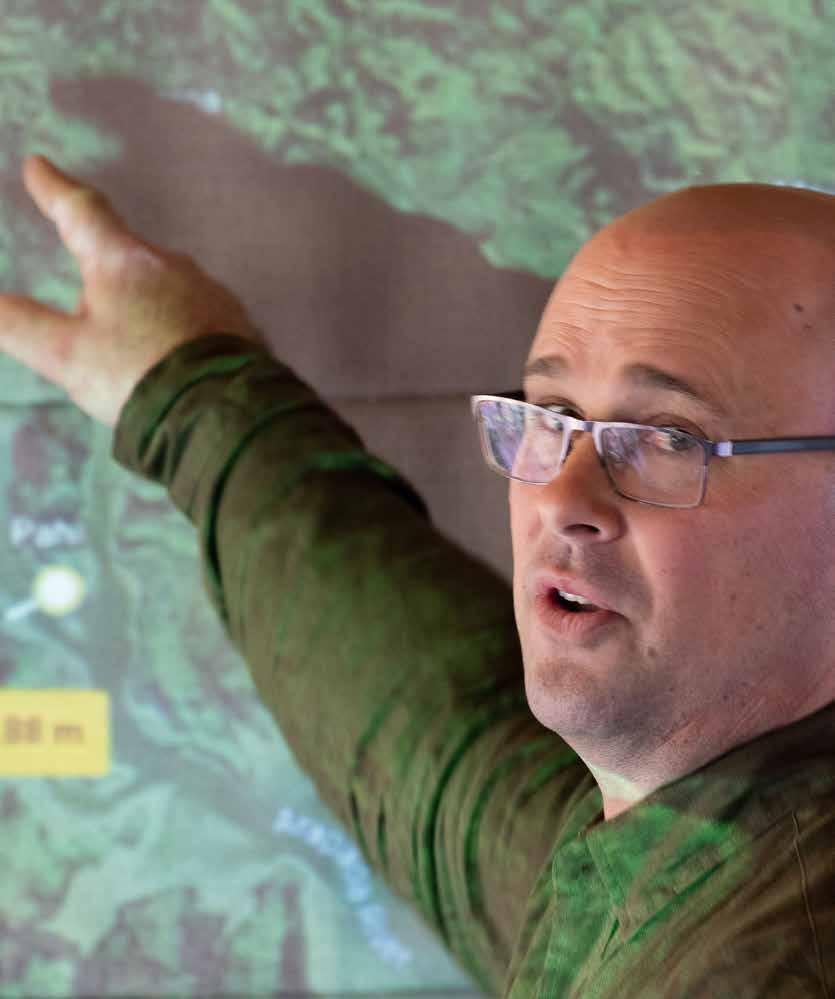
We intend to recruit for a philanthropy director in the near future to further expand access to non-government funding sources.
Other opportunities that would benefit the whole sector are professionalising and growing the workforce, greater investment in knowledge sharing with an emphasis on mātauranga Māori, and attracting funding from emerging climate change opportunities.
Company review
Since 2020, the Company has been the subject of an independent review conducted in two parts, by Deloitte and MartinJenkins. The first part looked specifically at the outcomes from Jobs for Nature funding, and the second at whether the Company was achieving what it had been set up to do and whether the current
27. Job number targets for the 2020 Budget allocation were forecast using the Jobs for Nature Full Time Equivalent (FTE) jobs calculator.
28. A range of co-funding targets have been set in project funding agreements consistent with earlier Statement of Performance Expectations and Letter of Expectation expectations of a 1:1 target. All funding agreements contracted during FY23 will have a 2:1 co-funding target.
structure was fit for purpose.
We continue to work on implementing those recommendations of the review reports that fall under our responsibility.
Future form & functions
We are currently awaiting decisions on our future form (company structure) and functions (strategic direction and operations). This includes the general scope of our role in the predator free movement and targeted outcomes, which flows through to the size of the Company in terms of the staffing and expertise we need.
Funding
Following the Provincial Growth Fund and Jobs for Nature funding boost, projects have generated co-funding of approximately $145 million.
While we have succeeded to date in working with projects to attract cofunding partners for both landscape projects and new science and research, the economic environment has changed considerably. Attracting co-funders is becoming increasingly difficult as budgets are tightened in the short term. We anticipate that the philanthropy director role will assist with this.
The majority of our landscape projects are developed and implemented over 5- to 10-year timeframes, and it is typical for science and R&D funding to also be committed for multiple years. We will work with all
aspects of the sector to increase the social engagement needed to ensure ongoing support for this work.
Meeting reporting standards
While we are excited by the progress and achievements to date, the addition of Provincial Growth Fund and Jobs for Nature funding streams has imposed additional reporting obligations for the Company, and for the projects that receive funding. We have been working to expand our reporting capacity and reinforce our finance function by recruiting a new chief financial officer role, appointing some temporary staff and improving our internal processes. We have also worked with the Department of Conservation to review the Company’s historical financial and non-financial outcomes.
Shaun Holland, Hapū/Community engagement officer for Pest Free Kaipara. Photo by Stuart Attwood.
57PREDATOR FREE 2050 LIMITED ANNUAL REPORT 2022
How we calculate co-funding
Co-funding is calculated over the forecast life of each large landscape project. Each project’s forecast budget is fully costed and includes financial and in-kind contributions. Volunteer and pro bono contributions are costed at market value, subject to a reasonableness test.29 A co-funding ratio is determined by applying the following two-step calculation:
1. Project budget less public service entity funding, less Company funding = eligible third-party funding.30
2. Co-funding ratio = eligible thirdparty funding/Company funding.
For the purposes of calculating the co-funding ratio, funding (in cash and in-kind) from any government public service entity (such as the Department of Conservation) is excluded. The ratio is therefore calculated by subtracting any public service entity contribution from the overall budget and using this figure to determine the overall contribution the Company makes.
Co-funding requirements are not applied to administration costs, science funding, Products to Projects and capability development costs.
How we calculate Jobs for Nature FTEs
The Company calculates all Jobs for Nature FTEs based on the calculation provided by the Department of Conservation, where 1 FTE equals 30 hours per week over 52 weeks a year.
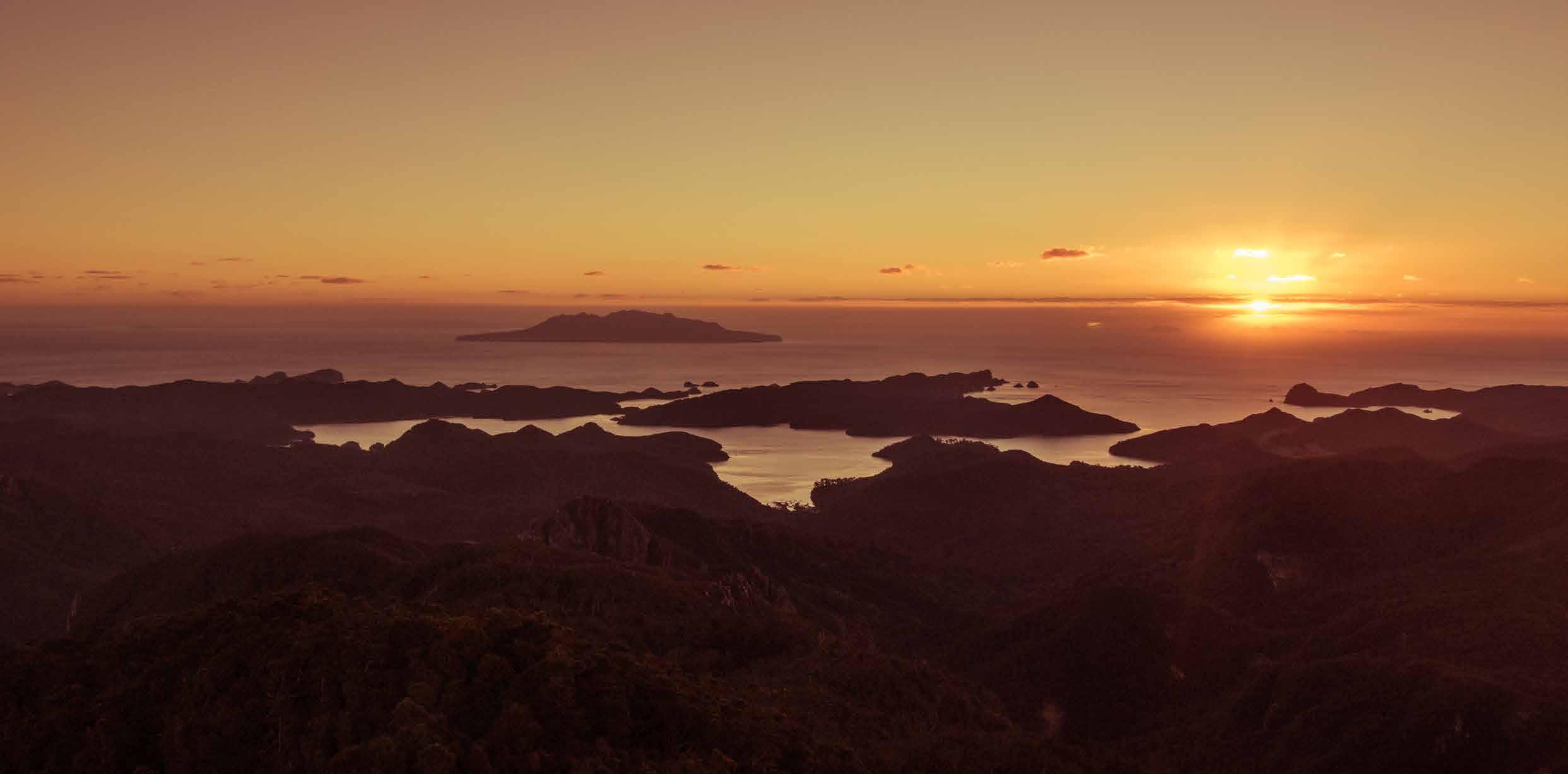
The calculation methodology does not calculate numbers of new roles; rather, it calculates numbers of hours cumulatively worked. This means that one person working for 30 hours a week for four years equates to 4 FTEs.
Financial statements
Our financial results and overall financial position mean that we are well placed to continue responding to future challenges and opportunities, to achieve our outcomes and to contribute towards the Predator Free 2050 goal.
For the year ended 30 June 2022 (FY22), we reported a net deficit of $2.478M, which is a $2.500M variance to budget, bringing our closing reserves down from $3.4M to $0.924M. This level of reserves is appropriate given the Company is part of the Crown.
29. The treatment of in-kind contributions has been applied since 2018, following advice from the Department of Conservation.
30. Public service entities are defined on the Public Service Commission website.
* Approximately $0.548M remains unallocated to FY23.
** As at 30 June 2022, a further $16.006M is ringfenced and
***
at 30 June 2022, a further $0.339M is ringfenced. Current
suggest initiation no later than 1 Jan 2023.
pending current negotiations.
As
negotiations
Te Hauturu-o-Toi / Little Barrier Island from Aotea / Great Barrier Island. Photo by Shaun Lee.
Percent of available government funding committed Funding stream Period Funding committed 30 Jun 2022 30 Jun 2021 Vote Conservation – Landscape* 2016–2023 97% 97% Provincial Growth Fund 2019–2024 100% 100% Jobs for Nature – Landscape** 2020–2024 73% 66% Jobs for Nature – R&D*** 2020–2024 98% 20% 59PREDATOR FREE 2050 LIMITED ANNUAL REPORT 2022
Revenue


We recorded revenue of $23.8M for the year ended 30 June 2022 against a budget of $37.2M.
Our funding primarily came from three Crown sources: Vote Conservation, the Provincial Growth Fund and the Jobs for Nature programme. Other sources of revenue included interest on cash we held and co-funding from Auckland Council for a Product to Projects investment.
Our Jobs for Nature funding provides $76M over four years. This funding will not be evenly split across that period due to the staggered nature of the projects we support. We may also choose to provide more funding support in the early stages for specific long-term projects to help them get started and attract co-funding.
Expenditure
Our overall expenses are $10.896M under budget for the year ended 30 June 2022.
This variance is due to delays related to landscape projects in feasibility and/or detailed planning stages and yet to move into the operational phase, and operational projects facing delays due to Covid-19, staffing or other issues. To date, the focus in science has been on Jobs for Nature investments.
$3.803M Provincial Growth Fund $15.550M Jobs for Nature $0.095M Other revenue $4.350M Vote Conservation
Investment in landscape 68% Investment in research science 24% Operating & governance 8% 61PREDATOR FREE 2050 LIMITED ANNUAL REPORT 2022
Internal Overheads
In addition to project underspend (explained below), the Company’s internal overhead expenses are also tracking under budget ($0.585M) mainly due to delayed recruitment, low travel costs and delayed conference expenses due to Covid-19 restrictions.
Recruitment for vacant roles is progressing well with the appointment of a governance director (start date 21 March 2022), the recent appointment of a knowledge broker (start date 27 June 2022), a chief executive officer (start date 11 July 2022) and a chief financial officer (start date 22 August 2022).
Recruitment for a philanthropy director was planned to commence in the third quarter. It was delayed until this financial year.
R&D / Products to Projects
This was overspent by $0.297M against budget. The Company’s focus has been to mobilise new product development contracts of new tools and best practices for landscape eradication projects through the Jobs for Nature funding stream. Along with the contracting pause faced earlier in the year, this has resulted in $1.2M of Vote Conservation underspend being deferred to FY23, as well as a $0.4M deferral of Provincial Growth Fund funding to FY23 due to Covid-19 challenges.
Landscape
This was underspent by $10.607M against budget. Funding withdrawal from the Rangitoto Birdsong project and deferment of payments to the Lake Brunner project due to operational delays were a significant contribution to the underspend. Jobs for Nature has seen a delay in projects moving out of feasibility stage, resulting in further deferment of our investment in the projects. In addition to this, the Waikaremoana project with Ngāi Tūhoe was on hold at their request, and the Predator Free Southland (Awarua) project is on hold due to lack of co-funding.31
Financial Statements for the year ended 30 June 2022
Independent Auditor’s Report 64
Statement of Comprehensive Revenue and Expenses 67
Statement of Financial Position 68
Statement of Changes in Equity 69
Statement of Cash Flows 70
Notes to the Financial Statements 71
Schedule of Investment in Projects 76
31. The Predator Free Southland (Awarua) and Waikaremoana project agreements were terminated in September 2022. 63PREDATOR FREE 2050 LIMITED ANNUAL REPORT 2022
INDEPENDENT AUDITOR’S REPORT
TO THE READERS OF PREDATOR FREE 2050 LIMITED’S FINANCIAL STATEMENTS AND PERFORMANCE INFORMATION FOR THE YEAR ENDED 30 JUNE 2022
The Auditor General is the auditor of Predator Free 2050 Limited (the ‘Company’). The Auditor General has appointed me, Graeme Edwards, using the staff and resources of KPMG, to carry out the audit of the financial statements and the performance information of the Company on his behalf.
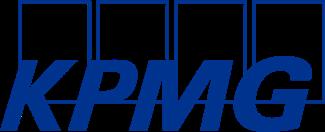

Opinion
We have audited:
• the financial statements of the Predator Free 2050 Limited on pages 67 to 77, that comprise the statement of financial position as at 30 June 2022, the statement of comprehensive revenue and expenses, statement of changes in equity and statement of cash flows for the year ended on that date and the notes to the financial statements including a summary of significant accounting policies and other explanatory information; and
• the performance information of the Company on pages 48 to 53,
In our opinion:
• the financial statements of the Company on pages 67 to 77:
o present fairly, in all material respects:
its financial position as at 30 June 2022; and
its financial performance and cash flows for the year then ended; and
o comply with generally accepted accounting practice in New Zealand in accordance with Public Benefit Entity Reporting Standards Reduced Disclosure Regime; and
• the performance information on pages 48 to 53:
o presents fairly, in all material respects, the Company’s performance for the year ended 30 June 2022, including for each class of reportable outputs:
its standards of delivery performance achieved as compared with forecasts included in the statement of performance expectations for the financial year; and
o complies with generally accepted accounting practice in New Zealand
Our audit was completed on 7 October 2022 This is the date at which our opinion is expressed.
The basis for our opinion is explained below. In addition, we outline the responsibilities of the Board of Directors and our responsibilities relating to the financial statements and the performance information, we comment on other information, and we explain our independence.
Basis for our opinion
We carried out our audit in accordance with the Auditor General’s Auditing Standards, which incorporate the Professional and Ethical Standards and the International Standards on Auditing (New Zealand) issued by the New Zealand Auditing and Assurance Standards Board. Our responsibilities under those standards are further described in the Responsibilities of the auditor section of our report.
We have fulfilled our responsibilities in accordance with the Auditor General’s Auditing Standards.
We believe that the audit evidence we have obtained is sufficient and appropriate to provide a basis for our opinion.
Responsibilities of the Board of Directors for the financial statements and the performance information
The Directors are responsible on behalf of the Company for preparing financial statements and performance information that are fairly presented and that comply with generally accepted accounting practice in New Zealand.
In preparing the financial statements and the performance information, the Directors are responsible on behalf of the Company for assessing the Company’s ability to continue as a going concern. The Directors are also responsible for disclosing, as applicable, matters related to going concern and using the going concern basis of accounting, unless there is an intention to liquidate the Company or to cease operations, or there is no realistic alternative but to do so.
The Board of Director’s responsibilities arise from the Public Finance Act 1989 and the Crown Entities Act 2004
Responsibilities of the auditor for the audit of the financial statements and the performance information
Our objectives are to obtain reasonable assurance about whether the financial statements and the performance information, as a whole, are free from material misstatement, whether due to fraud or error, and to issue an auditor’s report that includes our opinion.
Reasonable assurance is a high level of assurance, but is not a guarantee that an audit carried out in accordance with the Auditor General’s Auditing Standards will always detect a material misstatement when it exists. Misstatements are differences or omissions of amounts or disclosures, and can arise from fraud or error. Misstatements are considered material if, individually or in the aggregate, they could reasonably be expected to influence the decisions of readers taken on the basis of these financial statements and performance information
We did not evaluate the security and controls over the electronic publication of the financial statements and the performance information
As part of an audit in accordance with the Auditor General’s Auditing Standards, we exercise professional judgement and maintain professional scepticism throughout the audit. Also:
• We identify and assess the risks of material misstatement of the financial statements and the performance information, whether due to fraud or error, design and perform audit procedures responsive to those risks, and obtain audit evidence that is sufficient and appropriate to provide a basis for our opinion. The risk of not detecting a material misstatement resulting from fraud is higher than for one resulting from error, as fraud may involve collusion, forgery, intentional omissions, misrepresentations, or the override of internal control.
• We obtain an understanding of internal control relevant to the audit in order to design audit procedures that are appropriate in the circumstances, but not for the purpose of expressing an opinion on the effectiveness of the Company’s internal control.
• We evaluate the appropriateness of accounting policies used and the reasonableness of accounting estimates and related disclosures made by the Directors
• We evaluate the appropriateness of the reported performance information within the Company’s framework for reporting its performance.
PREDATOR FREE 2050 LIMITED ANNUAL REPORT 2022 65FINANCIAL STATEMENTS FOR THE YEAR ENDED 30 JUNE 2022
• We conclude on the appropriateness of the use of the going concern basis of accounting by the Directors and, based on the audit evidence obtained, whether a material uncertainty exists related to events or conditions that may cast significant doubt on the Company’s ability to continue as a going concern. If we conclude that a material uncertainty exists, we are required to draw attention in our auditor’s report to the related disclosures in the financial statements and the performance information or, if such disclosures are inadequate, to modify our opinion. Our conclusions are based on the audit evidence obtained up to the date of our auditor’s report. However, future events or conditions may cause the Company to cease to continue as a going concern.
• We evaluate the overall presentation, structure and content of the financial statements and the performance information, including the disclosures, and whether the financial statements and the performance information represent the underlying transactions and events in a manner that achieves fair presentation.
We communicate with the Directors regarding, among other matters, the planned scope and timing of the audit and significant audit findings, including any significant deficiencies in internal control that we identify during our audit.
Our responsibilities arise from the Public Audit Act 2001.
Other Information
The Directors are responsible for the other information. The other information comprises the information included on pages 1 to 47 and pages 54 to 66 but does not include the financial statements and the performance information, and our auditor’s report thereon.
Our opinion on the financial statements and the performance information does not cover the other information and we do not express any form of audit opinion or assurance conclusion thereon.
In connection with our audit of the financial statements and the performance information, our responsibility is to read the other information. In doing so, we consider whether the other nformation is materially inconsistent with the financial statements and the performance information or our knowledge obtained in the audit, or otherwise appears to be materially misstated. If, based on our work, we conclude that there is a material misstatement of this other information, we are required to report that fact. We have nothing to report in this regard.
Independence
We are independent of the Company in accordance with the independence requirements of the Auditor General’s Auditing Standards, which incorporate the independence requirements of Professional and Ethical Standard 1 (Revised): Code of Ethics for Assurance Practitioners issued by the New Zealand Auditing and Assurance Standards Board.
Other than the audit, we have no relationship with, or interests in, the Company.
Graeme Edwards KPMG

On behalf of the Auditor General Wellington, New Zealand
Statement of Comprehensive Revenue and Expenses
Predator Free 2050 Limited
For the year ended 30 June 2022
Account Notes Actual 2022 '000 Budget 2022 '000 Actual 2021 '000
Revenue
Distributions Received 2 23,703 37,178 22,343 Interest Received 2 8 15 7 Other Revenue 2 87 38 Total Revenue 23,798 37,193 22,388
Expenses
Employee Benefits Expense 7 1,337 1,756 1,176 Operating Expenses 8 824 953 686
Investment in Projects 3 24,091 34,402 20,278 Depreciation 23 61 16 Total Expenses 26,276 37,171 22,155
Surplus / (Deficit) for the Year (2,478) 22 233
This statement is to be read in conjunction with the notes to the financial statements.

PREDATOR FREE 2050 LIMITED ANNUAL REPORT 2022 67FINANCIAL STATEMENTS FOR THE YEAR ENDED 30 JUNE 2022
Statement of Financial Position
Predator Free 2050 Limited
As at 30 June 2022
Account Notes Actual 2022 '000 Budget 2022 '000 Actual 2021 '000
Statement of Changes in Equity
Predator Free 2050 Limited
For the year ended 30 June 2022
Account Actual 2022 '000 Budget 2022 '000 Actual 2021 '000
Current Assets
Bank 2,299 2,929 6,192
Trade and Other Receivables 4 137 497 544
Other Current Assets 24 15 17
Total Current Assets 2,460 3,442 6,754
Non-Current Assets
Fixed Assets 33 254 36
Total Non-Current Assets 33 254 36
Total Assets 2,492 3,696 6,790
Current Liabilities
Trade and Other Payables 5 712 165 378
Accrued Expenses 6 856 339 3,010
Total Current Liabilities 1,568 504 3,388
Total Liabilities 1,568 504 3,388
Net Assets 924 3,192 3,402
Assets Liabilities Equity
Retained Earnings 924 3,192 3,402
Total Equity 924 3,192 3,402
For and on behalf of the Board:
Retained Earnings
Opening Balance 3,402 3,170 3,169 Increases
Surplus for the Year 22 233 Total Increases - 22 233 Decreases Deficit for the Year 2,478 Total Decreases 2,478 -Total Retained Earnings 924 3,192 3,402
This statement is to be read in conjunction with the notes to the financial statements.
This statement is to be read
conjunction with the notes to the financial statements.
in
David Macleod Katie Milne Board Chair Director Dated: 07 October 2022
PREDATOR FREE 2050 LIMITED ANNUAL REPORT 2022 69FINANCIAL STATEMENTS FOR THE YEAR ENDED 30 JUNE 2022
Statement of Cash Flows
Predator Free 2050 Limited
For the year ended 30 June 2022
Account Actual 2022 '000 Budget 2022 '000 Actual 2021 '000
Statement of Cash Flows
Cash Flows from Operating Activities
Cash Received from Distribution and Other Income 23,790 37,178 22,381
Cash Paid for Investment in Projects (25,972) (34,402) (18,347)
Cash Paid to Suppliers (656) (776) (472)
Cash Paid to Employees (1,362) (1,756) (1,229)
Cash Paid for Governance Costs (87) (166) (158) GST 407 289 (382)
Total Cash Flows from Operating Activities (3,881) 367 1,794
Cash Flows from Investing Activities
Payments to acquire property, plant and equipment (20) (280) (31)
Total Cash Flows from Investing Activities (20) (280) (31)
Cash Flows from Financing Activities
Interest Received 8 15 7
Total Cash Flows from Financing Activities 8 15 7
Net increase / (Decrease) in Cash (3,894) 102 1,770
Bank Accounts and Cash
Opening Cash 6,192 2,827 4,422
Closing Cash 2,299 2,929 6,192
Net Change in cash for period (3,894) 102 1,770
Notes to the Financial Statements
Predator Free 2050 Limited
For the year ended 30 June 2022
1. General Overview
(a) Reporting Entity
Predator Free 2050 Limited (the 'Company') is a company incorporated in New Zealand, registered under the Companies Act 1993, and is domiciled in New Zealand.
The purpose of the company and its principal activity is to eradicate possums, rats and stoats from New Zealand by 2050.
The financial statements of the Company are for the year ended 30 June 2022.
(b) Basis of Preparation (i) Statement of Compliance
The financial statements have been prepared in accordance with New Zealand Generally Accepted Accounting Practice (NZ GAAP). They comply with the Public Benefit Entity International Public Sector Accounting Standards (PBE IPSAS) and other applicable Financial Reporting Standards.
The financial statements have been prepared in accordance with PBE Standards Reduced Disclosure Regime (PBE RDR) and disclosure concessions have been applied.
The criteria under which an entity is eligible to report in accordance with PBE Standards RDR is due to the Company not being publicly accountable or large, as defined by the External Reporting Board (XRB) Standard A1: Application of Accounting Standards.
The financial statements of the Company have been prepared in accordance with the relevant requirements of the Public Finance Act 1989 and the Crown Entities Act 2004, which includes the requirement to comply with NZ GAAP.
The financial statements are presented in New Zealand Dollars ($), which is the Company’s functional currency. All financial information presented in New Zealand Dollars has been rounded to the nearest dollar, except when otherwise indicated.
The Company is exempt from income tax under section CW 42(1) (a) of the Income Tax Act 2007. The Company has been granted tax exempt status and is registered as a charity under the Charities Act 2005.
PREDATOR FREE 2050 LIMITED ANNUAL REPORT 2022 71FINANCIAL STATEMENTS FOR THE YEAR ENDED 30 JUNE 2022
(ii) Going Concern
The financial statements have been prepared on a going concern and a historical cost basis. The Directors believe the use of the going concern assumption is appropriate, as the Department of Conservation has agreed to provide a current baseline funding of $5.914M per annum to the Company.The timing of drawdowns from the Department of Conservation are primarily governed by cash flow needs, which may result in a reported surplus or deficit at any one point in time.
(c) Use of Estimates and Judgements
There have been no significant estimates or judgements made in applying accounting policies and that effect amounts recognised in the financial statements.
2. Revenue
The company recognises revenue when the amount of revenue can be reliably measured, it is probable that the future benefits will flow to the entity and specific criteria have been met for each of the company's activities as described below.
(a) Distributions Received
During the year the Company received distributions from the Department of Conservation, which is considered a related party, totaling $23.703M (2021: $22.343M). Distribution income is recognized on receipt as a non-exchange transaction.
(b) Interest Received
Interest on deposits are accounted for as earned.
(c) Other Revenue
During the year the Company received $87K in funding from Auckland Council.
In 2021 the Company received $38K from a private donor for investment in research and development.
3. Investment in Projects
See the Schedule of Investments in Projects for details of current projects.
Account Actual 2022 Actual 2021
4. Trade and Other Receivables
GST 137,462 544,223
Total Trade and Other Receivables 137,462 544,223
Account Actual 2022 Actual 2021
5. Trade and Other Payables
Creditors 664,424 330,525
Taxes payable (PAYE) 48,029 40,414 Mastercard 0 6,962 Total Trade and Other Payables 712,453 377,901
Account Actual 2022 Actual 2021
6. Accrued Expenses
Project Investment 753,594 2,946,278 Other 102,366 63,388 Total Accrued Expenses 855,960 3,009,666
Account Actual 2022 Actual 2021
7. Employee Benefits Expense
Salaries 1,337,150 1,175,528
Total Employee Benefits Expense 1,337,150 1,175,528
Account Actual 2022 Actual 2021
8. Operating Expenses
Auditors Fee 44,422 21,910 Communications/PR 110,537 47,557 Consultancy Fees 168,445 59,482 Governance Expenses 100,664 138,059 Legal Fees 16,111 54,174 Office Expenses 48,074 58,114 Recruitment 68,915 55,393 Rent 93,169 91,509 Travel and Conference Expenses 79,729 95,642 Other Operating Expenses 93,806 64,357 Total Operating Expenses 823,873 686,198
PREDATOR FREE 2050 LIMITED ANNUAL REPORT 2022 73FINANCIAL STATEMENTS FOR THE YEAR ENDED 30 JUNE 2022
Parties
Predator Free 2050 Limited is owned by the Crown.
Related party disclosures have not been made for transactions with related parties that are:
· Within a normal supplier or client/recipient relationship
On terms and conditions no more or less favourable than those that are reasonable to expect Predator Free 2050 Limited would have adopted in dealing with the party at arm’s length in the same circumstances.
In conducting its activities, Predator Free 2050 Limited is required to pay various taxes and levies (such as GST, PAYE, FBT and rates) to the Crown and entities related to the Crown. The payment of these taxes is based on the standard terms and conditions that apply to all taxpayers.
Predator Free 2050 Limited enters into transactions with government departments, Crown entities and state-owned enterprises (e.g. New Zealand Post) and other governmentrelated bodies (e.g. Air New Zealand and local councils). These transactions occur within normal supplier or client relationships on terms and conditions no more or less favourable than those that it is reasonable to expect Predator Free 2050 Limited would have adopted if dealing with those entities at arm’s length in the same circumstances. These have not been disclosed as related party transactions and are not individually or collectively significant.
During the year the Company received distributions from Department of Conservation totaling $23.703M (2021: $22.343M).
The total value of Directors Fees paid during the period was $87K (2021: $110K). These costs are included in Governance Expenses in Note 8.
Account Actual 2022 Actual 2021
Key Management Personnel
Abbie Reynolds 30,905 216,038 Brett Butland 182,362 Daniel Tompkins 33,636 Edward Chignell 18,523
Total 213,267 268,197
The key management personnel, as defined in PBE IPSAS 20 Related Party Disclosure, comprise of senior personnel at the CEO position. During the year Abbie Reynolds was the CEO until 6 August 2021 and Brett Butland was the acting CEO starting from 2 August 2021. The aggregate remuneration of key management personnel and number of individuals, determined on a full-time equivalent basis, receiving remuneration is as noted above.
No CEO package included performance-based benefits in addition to the remuneration.
During the year transactions took place with the following organisations over which certain Directors have significant influence:
Account Actual 2022 Actual 2021
Services Received From
Zero Invasive Predators Limited 3,335,000 360,139
Manaaki Whenua – Landcare Research 66,758 756,125
Te Manahuna Aoraki Limited 0 46,000
Taranaki Regional Council 3,301,699 3,650,670
PF Wellington 5,095,730 3,723,413
PF South Westland 2,300,000 2,300,000
Account Actual 2022 Actual 2021
Amounts Receivable From/(Payable) To
Manaaki Whenua – Landcare Research 0 (57,500)
10. Commitments and Contingencies
The Company has entered into long-term commitments to fund Project Investment Costs as set out in Note 3.
As at 30 June 2022 the following amounts were due in respect of future operating lease payment for the lease of office space:
Less than five years: $38K
At balance date there are no known contingent liabilities (2021: $Nil). The Company has not granted any securities in respect of liabilities payable by any other party whatsoever.
11. Subsequent Events
There have been no events subsequent to balance date and up to time of approval of these financial statements that materially affect the position as it existed at that date (2021: $Nil).
9. Related
PREDATOR FREE 2050 LIMITED ANNUAL REPORT 2022 75FINANCIAL STATEMENTS FOR THE YEAR ENDED 30 JUNE 2022
Schedule of Investments in Projects
Predator Free 2050 Limited
For the year ended 30 June 2022
Figures in 000s
Landscape: Vote Conservation
Taranaki Taku Tūranga - Towards Predator Free Taranaki 11,770 2,871 7,945 953
Predator Free Hawke's Bay 1,620 431 1,189
Predator Free Wellington 3,275 781 2,414 81
Predator Free Dunedin 4,333 824 2,699 811
Te Korowai o Waiheke 2,600 974 1,001 626
Rangitoto Birdsong 1 80 (500) 580
Total Vote Conservation 23,678 5,380 15,828 2,470
Provincial Growth Fund
Predator Free Te Kinga 2 4,404 (415) 1,579 3,240
Predator Free Whangārei 6,000 1,514 1,266 3,221
Korehāhā Whakahau 2,400 822 965 613
Total Provincial Growth Fund (Landscape) 3 12,804 1,920 3,810 7,074
Jobs for Nature
Predator Free Wellington 7,600 3,245 2,905 1,450
Capital Kiwi 760 405 152 203
Pest Free Banks Peninsula 5,111 743 1,395 2,973
Waikaremoana 4 1,650 (308) 308 1,650
Predator Free Awarua 5 120 20 100
Predator Free South Westland 8,500 2,000 2,000 4,500
Predator Free Dunedin 6 3,510 1,984 150 1,376
Te Korowai o Waiheke 700 350 350
Taranaki Taku Tūranga Towards Predator Free Taranaki 7 750 750
Tū Mai Taonga 3,000 479 92 2,429
Pest Free Onetahua 3,000 70 180 2,750
Pēwhairangi Whānui - Predator Free Bay of Islands 4,000 1,000 3,000
Pest Free Kaipara 2,000 386 1,614
Kawau Multi-Species Predator Eradication Project 1,293 100 1,193
Groundtruth Ltd TrapNZ backbone development funding 400 100 300
Total Jobs for Nature (Landscape) 42,394 10,575 8,382 23,437
Total Landscape:
Products to Projects
Provincial Growth Fund
Remove and Protect (Zero Invasive Predators) 1,320 1,320
Backcountry Camara (Zero Invasive Predators) 400 400
Airbow Multi-Species Re-setting trap (Hammerforce Ltd / GlobalForce IP) 950 119 630 201
Long Life Lures (Boffa Miskell Limited) 300 24 276 0
Norbormide (Boffa Miskell Limited / Invasive Pest Control Limited) 488 5 351 133
Norbormide (Boffa Miskell Limited / Invasive Pest Control Limited) - AKL Counc 44 44
Auto Dispense lure (Boffa Miskell Limited) 353 78 265 10
Spitfire (Environment & Conservation Technologies Ltd) 748 35 555 158
Auto Rebait Reset Trap (NZ Auto Traps) 369 369
Flexi-Comms System (Red Fern Solutions Ltd) 468 106 290 72
Manaaki Whenua (Image Recognition) 106 106
Good Nature (prototype low-cost, non-toxic, biodegradable micro kill trap for rats) 900 100 210 590
Good Nature (Aerial Microtrap T2M project) 8 333 333
Cacophony (Design for manufacture and tooling of high catch rate live capture trap) 8 150 150
Total Provincial Growth Fund (Products to Projects) 9 6,928 510 5,254 1,163
Jobs for Nature
Encounter Solutions Ltd (Smart Live Capture Network Solutions) 600 295 196 109
Critter Solutions Ltd (Species-specific kill traps using CritterPic® AI technology) 749 351 398
NZ Auto Trap (Modify/repair returned traps ) 52 52
E Trapper - Baitmonitor device refinement 345 266 79
The Cacophony Project -Intelligent Trap V2 623 296 327
Ngāti Awa Korehaha - Contextualizing pest contol using indigenous knowledge 300 121 179
Envico - Rat Spitfire 712 326 387
Critter Solution Ltd (AI Camera) 409 162 247
Groud Truth (Deployment model) 88 43 45
Ground Truth (Lora Network) 59 29 30
Encounter Solution Ltd (smart live capture trap and RFID data) - AKL Council 50 45 5
Zero Invasive Predators - SWARM 1,000 700 300 Encounter Solution (Best practice for remote monitoring sytems for trapping programmes) 250 60 190
Total Jobs for Nature (Products to Projects) 5,236 2,746 196 2,295
Total Products to Projects 12,164 3,256 5,450 3,458
Research Science:
Vote Conservation Tranch 1: Environment & Society 246 246
Best Use of Existing Approaches 2,447 49 2,390 8
Exploring New Approaches 1,218 50 1,165 3 Computer Modelling 317 317
Non-contractual investment 111 109 2
Total Vote Conservation Tranch 1 4,339 99 4,227 13
Vote Conservation Tranch 2:
Island Conservation (Carbon Sequestration study for PF contributions) 100 100
Univeristy of Otago - Possum fertility control 300 100 200
University of Otago eDNA Predator monitoring 200 200
Manaaki Whenua - embryonic diapause to produce fertility control for mustelids 200 200
University Of Otago - sterilizarion pest using cell-targetinng apporach 325 54 271
The National Field Day 12 12
Data Standards - GIS 16 3 13
Total Vote Conservation Tranch 2 1,152 269 884
Jobs for Nature (Capability & Other)
Post DOC/DOC Capability Development Funding 2,435 790 1,645
Zero Invasive Predators (Research strategy phase 1) 1,500 500 1,000
Zero Invasive Predators (Research strategy phase 2) 1,000 700 300
University Of Otago - tactical genetic control tools Genomics Aotearoa 2,250 468 1,782
Callaghan Innovation - SFTI Challenge - Biosecurity Tech Mission 1,200 24 1,176
EcoNet Charitable Trust - CAMS CRM and GIS solution 90 56 34
Total Jobs for Nature (Capability & Other) 8,475 2,537 1,000 4,938
Total Research Science: 13,967 2,905 5,227 5,835
Other non-contractual project investment 10 559 55 504
Total Investment in Projects 105,565 24,091 39,200 42,274
1 In November 2021 the funding was withdrawn due to lack of secure co-funding. All previous accruals were reversed.
2 Operational delays faced by Lake Brunner has seen our investment deferred to FY23. All previous accruals were reversed.
3 $0.8M has been funded from Vote Conservation funding.
4 During the year, the project was put on hold for reframing at the projects request. All previous accruals were reversed.
5 Excludes $4.880M ring-fenced as at 30 June 2022.
6 Excludes $0.500M ring-fenced as at 30 June 2022.
7 Excludes $2.433M ring-fenced as at 30 June 2022.
8
FY21 Annual Report misaligned the two projects. The above schedule reflects the correct amounts against each project for all years. There is no impact to the overall position.
9 $0.384M has been funded from Vote Conservation funding.
10 Mainly relates to legal fees. This also includes $50K investment in Chatham's (seed funding).
PF2050 Total Investment FY22 Actuals FY18 - FY21 Actuals PF2050 Ongoing Commitment Post FY22
78,876 17,876 28,019 32,981
PREDATOR FREE 2050 LIMITED ANNUAL REPORT 2022 77FINANCIAL STATEMENTS FOR THE YEAR ENDED 30 JUNE 2022
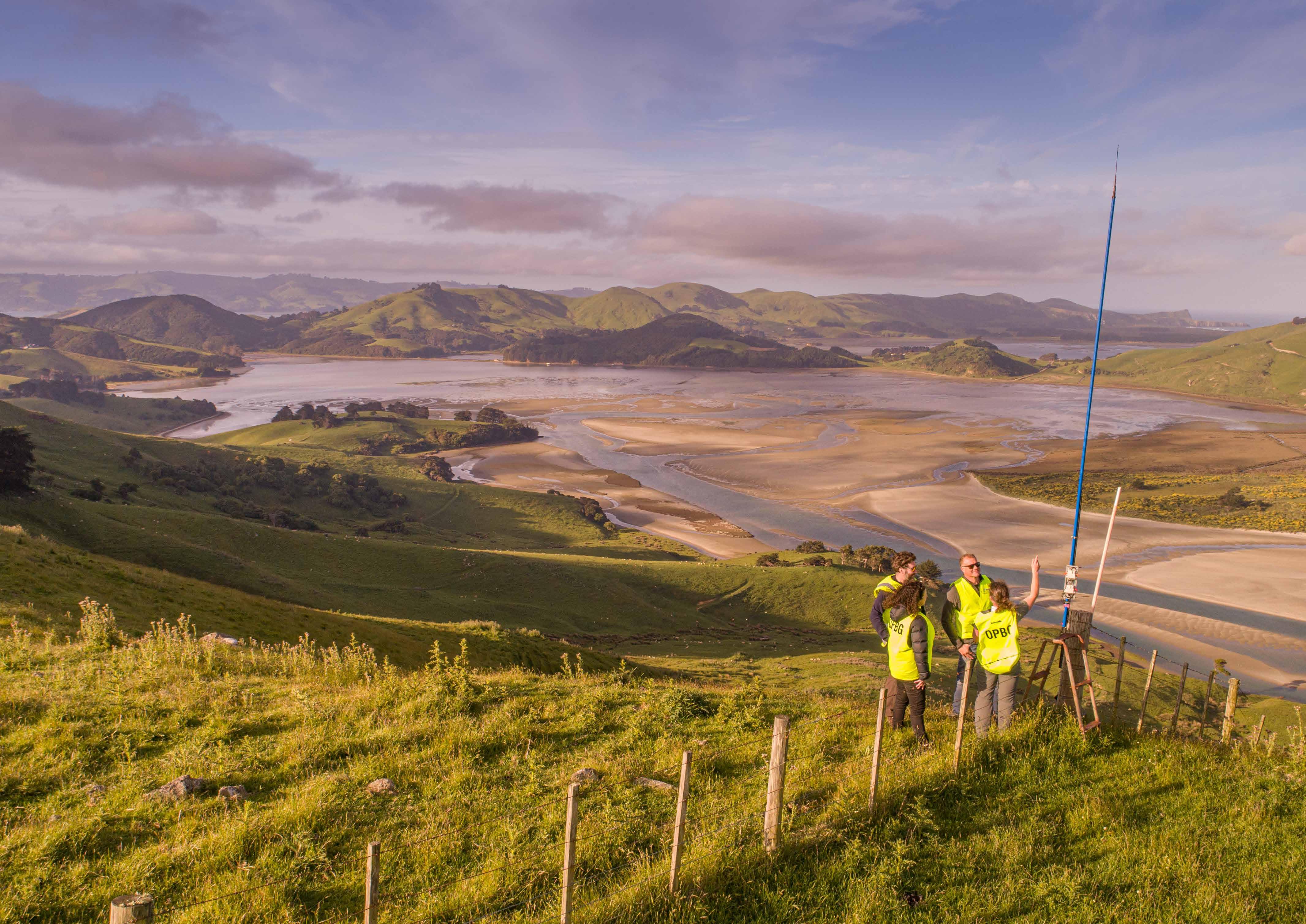 Staff from Predator Free 2050 Limited and Predator Free Dunedin, at a Celium hub on the Otago Peninsula. Photo by Josh Jenkins, Reframed Media.
Staff from Predator Free 2050 Limited and Predator Free Dunedin, at a Celium hub on the Otago Peninsula. Photo by Josh Jenkins, Reframed Media.
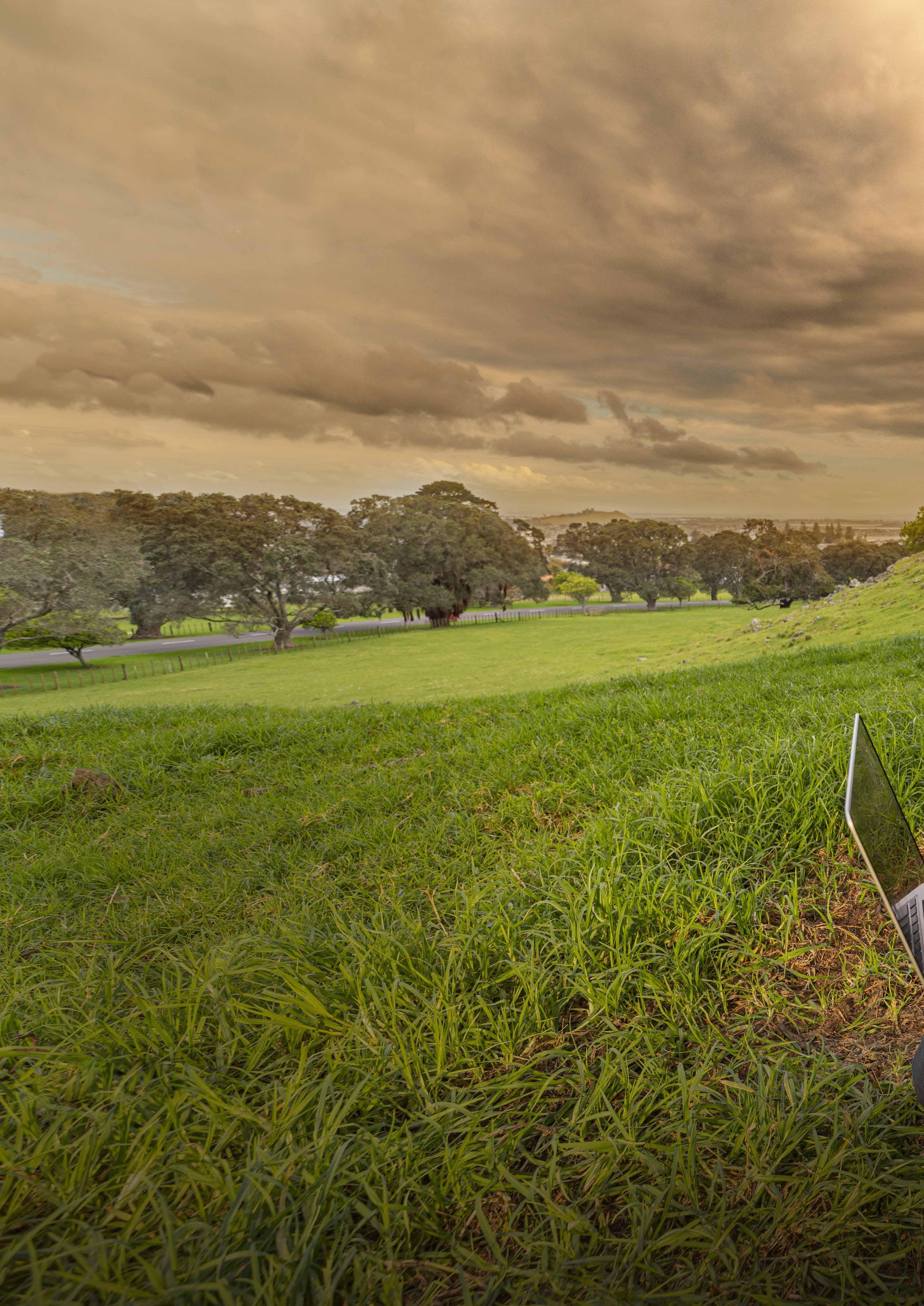
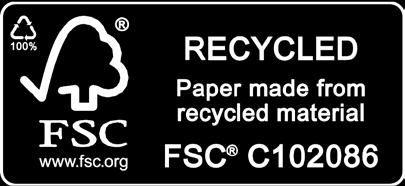 eTtrapper Managing Director Iain Hook shows how the Baitsense operates in the field and online. See page 40 for details. Photo by Shaun Lee.
Predator Free 2050 Limited is a Toitū carbon reduce certified organisation. We are committed to reducing our environmental impact and will be striving toward becoming a carbonzero workplace in the future.
Eco100 is a first class, environmentally responsible offset paper, produced using FSC Certified, 100% Post Consumer Recycled PCF pulp
eTtrapper Managing Director Iain Hook shows how the Baitsense operates in the field and online. See page 40 for details. Photo by Shaun Lee.
Predator Free 2050 Limited is a Toitū carbon reduce certified organisation. We are committed to reducing our environmental impact and will be striving toward becoming a carbonzero workplace in the future.
Eco100 is a first class, environmentally responsible offset paper, produced using FSC Certified, 100% Post Consumer Recycled PCF pulp

 Towards Predator-Free Taranaki in conjunction with Taranaki Mounga, covers a range of terrain including the majestic Mt Taranaki itself. Photo by Melissa Brignall-Theyer.
Towards Predator-Free Taranaki in conjunction with Taranaki Mounga, covers a range of terrain including the majestic Mt Taranaki itself. Photo by Melissa Brignall-Theyer.














































 By Critter Solutions Limited
By Encounter Solutions Limited
By Critter Solutions Limited
By Encounter Solutions Limited






 By Zero Invasive Predators (ZIP)
By eTrapper Limited
By Zero Invasive Predators (ZIP)
By eTrapper Limited















 Staff from Predator Free 2050 Limited and Predator Free Dunedin, at a Celium hub on the Otago Peninsula. Photo by Josh Jenkins, Reframed Media.
Staff from Predator Free 2050 Limited and Predator Free Dunedin, at a Celium hub on the Otago Peninsula. Photo by Josh Jenkins, Reframed Media.

 eTtrapper Managing Director Iain Hook shows how the Baitsense operates in the field and online. See page 40 for details. Photo by Shaun Lee.
Predator Free 2050 Limited is a Toitū carbon reduce certified organisation. We are committed to reducing our environmental impact and will be striving toward becoming a carbonzero workplace in the future.
Eco100 is a first class, environmentally responsible offset paper, produced using FSC Certified, 100% Post Consumer Recycled PCF pulp
eTtrapper Managing Director Iain Hook shows how the Baitsense operates in the field and online. See page 40 for details. Photo by Shaun Lee.
Predator Free 2050 Limited is a Toitū carbon reduce certified organisation. We are committed to reducing our environmental impact and will be striving toward becoming a carbonzero workplace in the future.
Eco100 is a first class, environmentally responsible offset paper, produced using FSC Certified, 100% Post Consumer Recycled PCF pulp